
2023 EDITION 2 TM
Operators everywhere have a great opportunity to close the digital divide, but we all know this comes with many challenges. Adtran and ADVA have now formally combined, enabling us to make an even bigger di erence for YOU by o ering a true end-to-end ber solution portfolio.

•Subscriber and Enterprise
•Access and Aggregation

•Optical Networking
•Comprehensive Open, Cloud-Centric Software
•Stronger Local Support, Services, and R&D
Connect with us at Fiber Connect Aug. 20-23 – Kissimmee, FL
Proud Diamond Sponsor
ADT12022 Copyright © 2023 ADTRAN Inc. All rights reserved












































































































































































































































































































































































































































































































































































17 Fiber Forward 800-238-7514 | ptsupply.com SEECHANGE ™ ACCESS TERMINAL IDEAL FOR ANY FIBER DEPLOYMENT SEECHANGE ™ ACCESS TERMINAL IDEAL FOR ANY FIBER DEPLOYMENT
THE FUTURE OF CONNECTIVITY STARTS HERE
As our country continues to build out the critical fiber network to provide better internet speeds, connectivity to rural areas and more 5G access, Atkore stands with you ready to provide the conduit necessary to complete your project on time.
With nationwide distribution, the Atkore portfolio spans ½ inch all the way up to 16 inches, some of the largest HDPE conduit in the industry. Our conduit is available in 12 colors with various striping options resulting in 144 different variations to meet your project requirements .
HDPE WHERE YOU NEED IT, WHENEVER YOU NEED IT.

Learn more at atkore.com
Gary Bolton, FBA President & CEO

Dear FBA Members,
As we approach mid-year of 2023, our efforts to connect every American household with fiber continues to accelerate.
The NTIA is on track to issue each state and territory its allocation of the $42.45 billion BEAD infrastructure funding by June 30th. We are seeing different levels of preparedness from State Broadband Offices to launch their grant applications. States like Louisiana with be among the first out of the gates to roll out their BEAD grant programs, while others will need the full 180 days after June 30th to submit their Initial Proposals to NTIA for approval. As a result, the flow of BEAD funding is going to vary from the beginning of the year into the second half of 2024.
In addition to doing what we can to help states launch their BEAD grants, the Fiber Broadband Association continues to put a hard focus on equipping the states with workforce development programs, an eligible expense from BEAD funding. FBA completed an extensive research effort with Cartesian and issued our Broadband Workforce Development Guidebook to the State Broadband and State Workforce Development Offices in May.
Further, FBA has been working with Congress on legislation to accelerate broadband-related permitting. The House Energy and Commerce Committee recently marked up 28 broadband permitting bills.
While everyone is thinking about summer vacations this quarter, our industry will begin moving from preparation to execution of building our nation’s critical broadband infrastructure. This issue of Fiber Forward and our Fiber Connect 2023 annual conference is focused on the future and “What Fiber Disrupts Next.” It is an exciting time for our industry as we close the digital equity gap and enable a wave of disruptive innovation.
In the spirit of “What Fiber Disrupts Next,” you will immediately notice “The Jetsons”-like theme to the cover art. Check out the articles on our upcoming “Let the Disruption Begin - Fiber Connect 2023 Preview,” “The Disruptive and Transformative Power of Fiber,” and “Prepping for Cybersecurity.” You will also find some very informative articles on the Middle Mile with “Making the Middle Mile Network” and “California’s 10,000 Mile Middle-Mile Network.”
With workforce development a key focus of FBA, I encourage you to read up on our Broadband Workforce Development Guidebook and our efforts to roll out our Fiber Optic Technician training nationwide. You will also see that we are beginning to highlight how fiber is benefiting cable and wireless in the articles, “Fiber Delivers Tower Power” and “Cable’s Surging Fiber Future.”
As we look forward to June and August, we are excited about our next Regional Fiber Connect workshop in Lake Tahoe, Calif., on June 21, and Fiber Connect 2023 in Orlando, August 20-23. Our Regional Events have been phenomenal in drawing attendance from community leaders and service providers who have not been to an FBA event before. It has been a great opportunity to grow our audience. Our annual conference is on track to be the biggest and best fiber broadband conference in the world this year and you will not be disappointed.
I want to take a moment to thank our hardworking board, staff, strategic partners, and volunteers who tirelessly work on our committees and working groups to advance our industry. This is an exciting time for our industry, and we are at the moment in history where we can make a significant positive impact for generations to come. What an amazing time to be at the Fiber Broadband Association!
Sincerely,

05 Fiber Forward • fiberbroadband.org
Delivering broadband is easier than you think. Just FOLLOW THE POWER®.
Today, Internet access isn’t a privilege as much as it is a necessity. Using your existing infrastructure, electric co-ops can deliver broadband to underserved areas. With AFL’s proven expertise in fiber and electric utility markets, we can show you how. With our FOLLOW THE POWER approach, utilizing your right-of-way, you will be able to provide broadband and optimize grid performance.
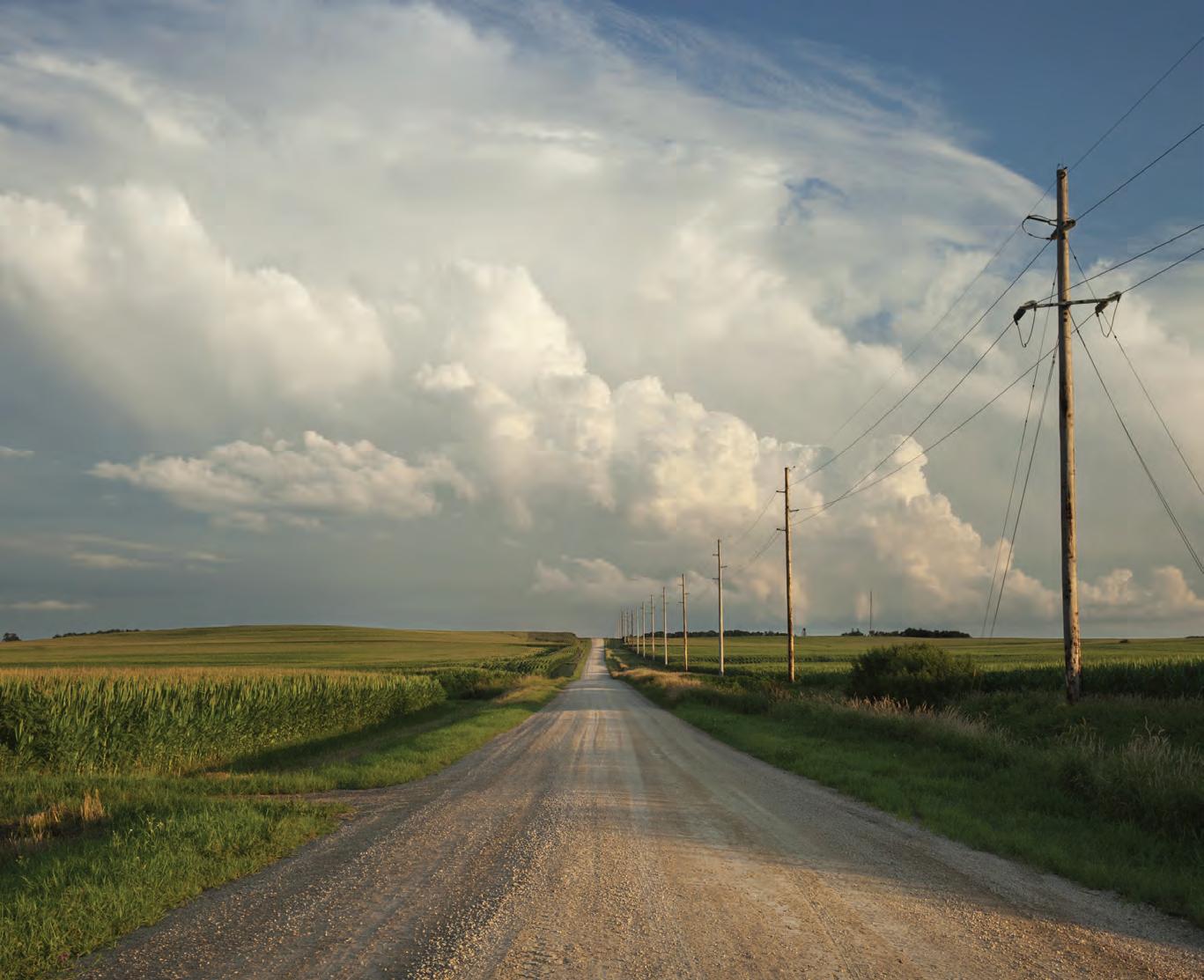
17 Fiber Forward
www.AFLglobal.com/FTTP 864.433.0333
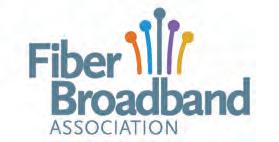
FBA PRESIDENT & CEO Gary Bolton PUBLISHER Connect2 Communications, Inc. EDITOR-IN-CHIEF Doug Mohney CONTRIBUTING WRITERS Gary Bolton FBA President and CEO Evann Freeman EPB Director of Government Relations & FBA Conference Committee Chair Marissa Mitrovich FBA Vice President of Public Policy Rich Williams Fiber Connect Conference Program Director ADVERTISING SALES DIRECTOR Lucy Green DESIGNER Rick Skippon Join Fiber Broadband Association Today! www.fiberbroadband.org Mark Your Calendars for Fiber Connect 2023! August 20–23, 2023 Orlando, FL Subscribe to the Fiber For Breakfast podcast on your favorite podcast platform. 2023 EDITION 2 Table of Contents 07 Fiber Forward • fiberbroadband.org 05 Letter from the President & CEO 08 About the Cover 09 Editor’s Moment 10 Fiber Delivers Tower Power 13 Yellowstone Fiber Bonds Its Way To Fiber 15 Ponca City’s Longer Path To Residential Fiber 16 FBA Public Policy Update 19 The Disruptive and Transformative Power of Fiber 29 Fiber Photos 35 Prepping for Cybersecurity 38 California’s 10,000 Mile Middle-Mile Network 40 Making the Middle Mile Network 42 Let the Disruption Begin – Fiber Connect ‘23 Preview 45 Microtrenching Takes a Pole Position 48 Fiber’s Sustainability Pull 51 2023 Industry/Partner Event Calendar 52 A Timely Guide To Building the Broadband Workplace 54 Cable’s Surging Fiber Future 55 FBA Editorial Calendar 56 FBA Calendar of Events 2023
About the Cover
When Warner Brothers debuted “The Jetsons” in prime time on September 23, 1962, it was innovative, disruptive, and groundbreaking. It was the first program broadcast in color on ABC at a time when only a handful of ABC stations were capable of broadcasting in color. It depicted a world with flying cars, robotic housekeepers, holograms, and video phone calls. Today, a lot of that technology is commonplace, or on the verge of becoming so. Substitute flying cars for autonomous vehicles and we’re almost there with the Rumbas we use to help clean our homes, the host of video chat programs, VR and AR advancements, and a host of other technologies available that are used by millions of people daily.
As we worked on the content for this issue of Fiber Forward, we focused on the role the network plays in underpinning innovation and disruption. For the cover, we decided to tip our hats to George and Jane Jetson and the creative team at Hanna-Barbera Productions and depict a not-far-off future when advances in how we live, work, stay healthy, consume entertainment, and interact with community services are better when connected with fiber broadband. Communities connected with fiber broadband simply have more opportunity to grow and thrive, where the potential is as unlimited as the capacity only fiber broadband can deliver.

Created by Raleigh-based Illustrator Alice Holleman (www.AliceHolleman.com),
BRINGING BROADBAND


1-800-GRAYBAR | GRAYBAR.COM © 2022 Graybar Electric Company, Inc. All rights reserved. to South Texas On Time and On Budget Scan the QR code to hear from the leadership of Pharr, Texas on their success story of building a fiber optic network to provide affordable internet to their rural community. Info.graybar.com/Pharr
this issue’s Fiber Forward imagines a city where everything from healthcare to entertainment to municipal services are all enriched in fiber broadband. Enjoy!
2023 EDITION 2
Editor’s Moment Don’t Take Fiber for Granted
 By Doug Mohney, Editor-in-Chief
By Doug Mohney, Editor-in-Chief
BEAD will move fiber into the vast majority of homes in the country over the next five years, a large and significant step to closing the digital divide and putting into place a long overdue generational upgrade of the nation’s telecommunication infrastructure. Copper connectivity has served its purpose and now is being replaced by fiber, a technology that is energy efficient compared to all other alternatives and unlimited in its ability to be upgraded for decades to come.
But it’s easy to lose sight of how fiber has already transformed businesses and operational models across the economic landscape. In April, Netflix announced its endof-life date for its DVD mail delivery service, moving to an all-streaming model. A lot of us had already put the archaic idea behind us of waiting by the mailbox for a physical disk to show up so we could watch a movie. It’s easy to see why Netflix is retiring it – lots of physical inventory to store, track, maintain, and replace, losses due to damaged and lost disks, plus mailing disks back and forth.
If there’s a flaw to Netflix’s plan, it’s the fact there are many video series and films unavailable on streaming platforms – “Homicide: Life on the Street” being one example -- begging the question as to when and how a larger universe of classic and niche content currently locked onto legacy media will make its way onto today’s broadband service. The problem keeping these gems locked up isn’t technology, but licensing and business models. When the day comes that someone finds the key, fiber stands ready to deliver, as it already does for Amazon, Disney, HBO, NBC, Paramount, and the many other streaming options we take for granted today.

Fiber already provides the literal backbone for all of today’s modern telecommunications services. Cell towers deliver multigigabit 5G speeds to smartphones today thanks to the fiber networks feeding them while fiber-anchored middle
mile networks will extend coverage into unserved and underserved areas so fiber last-mile networks can bring those areas up to 21st century standards.
It bears repeating that most of the “cable” industry’s networks are more than 90% fiber, according to CableLabs, with only the last mile and last foot being delivered by legacy coax. But each year, more and more “cable” companies are deploying fiber in the last mile because it is more energy efficient, simpler and less costly to deploy than legacy RF equipment in greenfield deployments and can be easily upgraded to crazy fast speeds. CableLabs has demonstrated and established standards for 100 Gbps and 200 Gbps Ethernet links and conducted demonstrations on how to affordably move the bar to terabit speeds when the time comes. But they may not have to, given the work Ciena and Nokia are doing to lower the cost and shrink the physical footprint of optical networks.
Three areas that continue to be disrupted and transformed by fiber are medicine, municipalities, and utilities. We’ve barely scratched the surface of telemedicine’s potential. Similarly, Smart City applications started with traffic management powered by fiber and now include public safety and IoT support. Simply managing the electric grid to reduce outages has now evolved into a Smart Grid capable of fully balancing renewable energy, power storage, and growing needs for charging electric vehicles.
BEAD fiber deployment is bound to unlock benefits and applications we haven’t dreamed of yet. Which is why it is important we continue to press for every household to get fiber.
Sincerely,
09 Fiber Forward • fiberbroadband.org
Fiber Delivers Tower Power
By Doug Mohney
Cell phones have come a long way in the last 30 years and so has the infrastructure supporting them. It wasn’t so long ago that text messaging was a novelty and data rates were measured in kilobytes per second. Today, 5G smartphones deliver real-world speeds of gigabytes per second, enabling people to add high-quality pictures, videos, and colorful emojis to messages, while we play games and watch movies while on the subway or at the airport.
To support the increase in speeds, feeds, and apps, towers are substantially upping their information superhighway game, with fiber the essential infrastructure to enable the Apple iPhones and Androids we now take for granted in our daily lives. Tower operators are also leveraging fiber’s unlimited capacity to offer new opportunities to connect communities through the resources available through their networks.
“A large majority of towers are fed with fiber,” said Kelly Brewer, Vice President of Operational Strategy and Innovation at Crown Castle. “Both fiber and power at the tower are essential to be able to provide wireless connectivity. In some cases, we own the fiber to the tower. In other cases, our tenants will have a third-party provider bring fiber to the tower. Our customers look to us to help them build out their networks and that includes fiber.”
With 5,000 employees, Crown Castle is the largest shared communications infrastructure provider in the United States. The firm has a portfolio of over 40,000 towers, 120,000 small cell nodes, and more than 85,000 route miles of fiber, with substantial assets in some of the top U.S. metro markets.
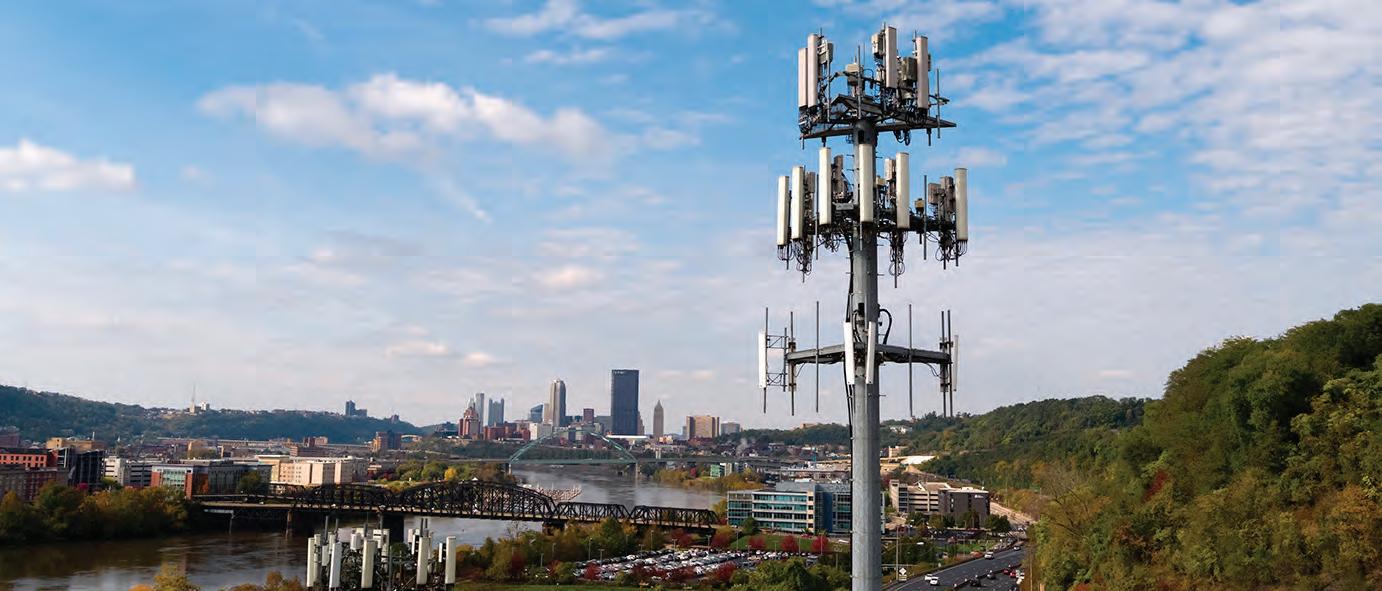
“We like to leverage our existing footprint of fiber first,” Brewer said. “If our customers are looking to build beyond our footprint, we often will build new fiber that supports small cells and/or tower connectivity. We will build both.”
Crown’s customers are seeking speed and lots of it. The company can deliver up to 100 Gbps dedicated service to the customer premises right now, with availability up to 400 Gbps in select metros. “We’re working on the capacity to expand that in the next 12 to 18 months,” Brewer stated. “Certainly, we’re starting to see an uptick in the requirements from our customers. We’re thinking ahead about speeds and as applications continue to evolve, we know we’re going to have to be out ahead in order to be able to offer speeds that keep up.”
But Crown’s range of assets is increasingly being looked at for more than use by wireless and cellular carriers. “Our towers offer a uniquely consistent platform for fiber and wireless providers to collocate,” Brewer said. “While we’re talking about wireless colocation on the tower and then being fed by fiber, another trend we’re consistently seeing is that these towers are able to host other types of service providers. They have power, space, and fiber available, so they’re great for aggregation hubs and facilities as well, like colocation for ISPs as they start to expand out.”
Brewer said tower facilities can help unlock unserved areas for ISPs, serving as a jump-on point to connect a rural ISP or expansion network due to the availability of space, fiber, and power. “There are multiple applications that a tower can provide for a rural ISP,” said Brewer. “It can be a great place to aggregate traffic, it can be a great place for a regeneration facility,” she said.
With fiber running to a tower location, ISPs can connect into Crown’s long-haul network and take advantage of existing available shelter space as the base of the tower. If there’s no shelter space available, Crown is willing to discuss the availability of leasing ground space for the construction of supplemental facilities to meet ISP needs, or turnkey managed facilities.
10 Fiber Forward • Q 2
5G is driving fiber deployments and upgrades within the cell tower industry. Source: Crown Castle.
Frontier sees towers as a substantial opportunity for business and fiber network expansion. In February, AT&T and Frontier announced an agreement to exponentially expand its use of Frontier’s existing fiber infrastructure to provide high-speed connectivity to AT&T’s wireless infrastructure in areas where A&T doesn’t currently own fiber.
“Frontier’s tower strategy is quite intertwined with our overall purpose of building gigabit America and building a gigabit infrastructure that supports consumers, corporations, wireless operators and other infrastructure providers,” said Vishal Dixit, Frontier’s Chief Strategy Officer and Executive Vice President of Wholesale. “We’re the second largest builder of fiber to the premises behind AT&T in the U.S. at this point in time. We are scaling our build to include towers quite materially.”
“The way you build a fiber infrastructure is you build an entire infrastructure, which includes fiberizing your central offices, fiberizing the connectivity and your midcore between your central offices and your splits, ending at the various streets that allows you to get to those residential customers. When you’re doing all of that, you also may be infrastructure for reaching corporations and buildings, but also towers. We pass thousands of towers on our footprint.”
Under the February deal, AT&T will put wireless infrastructure in Frontier central offices and connect them to AT&T’s network through Frontier’s fiber network. AT&T is the first tenant to lease space in Frontier’s CO’s. The arrangement is especially important as carriers roll out services which require fiber to provide the high-speed and low latency necessary for 5G to live up to its promises.
Frontier’s combination of fiber and central offices enables the carrier to provide multiple services for tower
operators. “From the base of the tower to the central office is going to be a private label product and solution,” said Dixit. “The central office will be acting as connection points for multiple towers that are in the area. From the central office, there’ll be a fatter pipe or a larger backhaul connectivity, 100 gig or more, that’s connecting to the interconnection points for the wireless operators themselves and their backhaul. Within the central offices, we have rack space for virtualized RAN servers and other services which allow some of the low latency aspects of 5G to be brought to life. It’s all part of an end-to-end infrastructure play supporting wireless operators.”
Frontier has mapped out where all the towers from all the wireless operators are, enabling the carrier to optimize its builds and coverage to reach more towers as it expands its fiber network. “We have all of the major wireless carriers signed up with us now,” Dixit said. “We’ve got extensive plans to ramp up fiber-connected towers with all of them, as well as with many of the smaller providers as well. This is moving into a zone where the tower business, tower connectivity including edge computing, is going to be a really important driver of revenue growth in the future and stable revenue as well. Long-term contracts are a key feature of towers. That provides stability to the business and make it more like a traditional infrastructure business as opposed to a legacy wholesale business.”
For cellular carriers, the 5G “journey” is only starting, Dixit said, with demands for more bandwidth and lower latency only continuing to increase over the next five to seven years as more phones and applications come online. “And you can bet your bottom dollar by the time we’re getting to the end of the deployment of 5G, 6G will be around the corner and who knows what that is going to be like?”
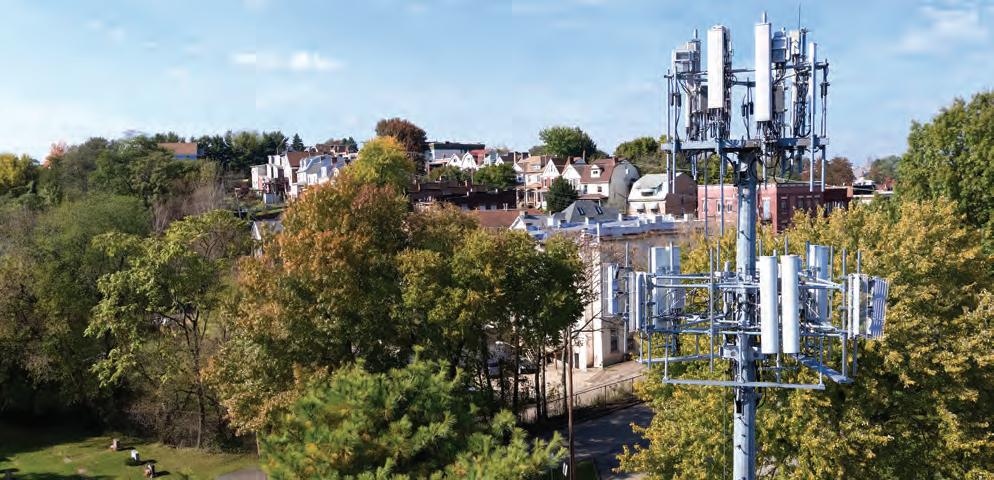
11 Fiber Forward • fiberbroadband.org
Tower fiber and facilities can offer on-ramps for delivering fiber to unserved communities. Source: Crown Castle.

230272A006 © 2023 Wesco International
Connect. Streamlining Rural Fiber Deployments Wescodi.st/broadband
Design. Build.
By Doug Mohney
Yellowstone Fiber BONDS
ITS WAY TO FIBER
While many organizations are seeking state and federal monies to build their networks, Yellowstone Fiber has gone a different route. The 501(c)(3) tax-exempt organization raised $65 million dollars in an industrial development revenue bond issue to finance the construction and early operations of its all-fiber optic network which is bringing speeds up to 10 Gbps to homes and 100 Gbps to businesses in Bozeman, Montana, and the surrounding Gallatin County area.
“All the stars had aligned perfectly for us to A) get the money, B) at the interest rate we were able to acquire, and C) be a little bit in front of the mad rush to fiber that developed out of the COVID situation,” said Greg Metzger, CEO Yellowstone Fiber. “Right now, we pass around 4,000 homes. This summer, we would like to take that up to about 14,000 homes this building season.”
Yellowstone started planning for broadband in 2011, recognizing that the community had poor communication with the outside world. Two years later, a broadband committee was put together that secured a Communicate Reinvestment Act loan with eight banks to build an initial fiber network that served local schools, city, and county government. Later, some business customers were added over the years until the pandemic came along.
“With everyone trapped at home with COVID, it became obvious that the need for fiber was even greater than we originally started out with,” Metzger said. “We needed to help by expanding fiber into our communities so people could actually work from home and kids could do schoolwork from home.”
In 2021, Yellowstone developed an operational partnership with Utah-based UTOPIA Fiber that helped them secure the bond deal at the end of December 2021, leading
them directly into starting expansion work in January 2022, including engineering and ordering product, conduit, fiber, and the other necessary items needed to build their network.
The bonds are secured solely by the net revenues generated by the network and the partnership with UTOPIA Fiber, have a 30-year term at a borrowing cost of 3.92%, with funds financing the cost of expanding Yellowstone’s existing fiber optic network, and refinancing certain existing debt incurred for the construction of the fiber optic infrastructure. Due to the structure of the bonds, the project does not involve or rely on taxpayer money.
Weather has proven to be the biggest obstacle to faster expansion progress, with an early October onset of cold temperatures and a late spring dragging the start of construction into April of this year. “The ground freezes during winter,” said Metzger. “You can’t put in handholds or fiber to the home, the last 100 feet is pretty much impossible.”
Once the ground thaws, Yellowstone will have 25 crews deployed between aerial and boring teams to start connecting the additional 10,000 locations in the area. “We’ve got a great opportunity this spring to really jump up on our sales and customer connections,” said Metzger.
Yellowstone is operating an open access network, hosting five service providers working with businesses and residents while a sixth provider is focused exclusively on businesses. The fiber provider currently has 225 business customers on the network, including an office for Aurora, a selfdriving technology company; the headquarters for onX, an adventure mapping company; and a large accounting firm.
And what about the popular TV series of the same name?
“Paramount is putting in a studio, but we don’t work with them today,” Metzger said. “It’s just around the corner. There’s a lot of film activity in the area.”

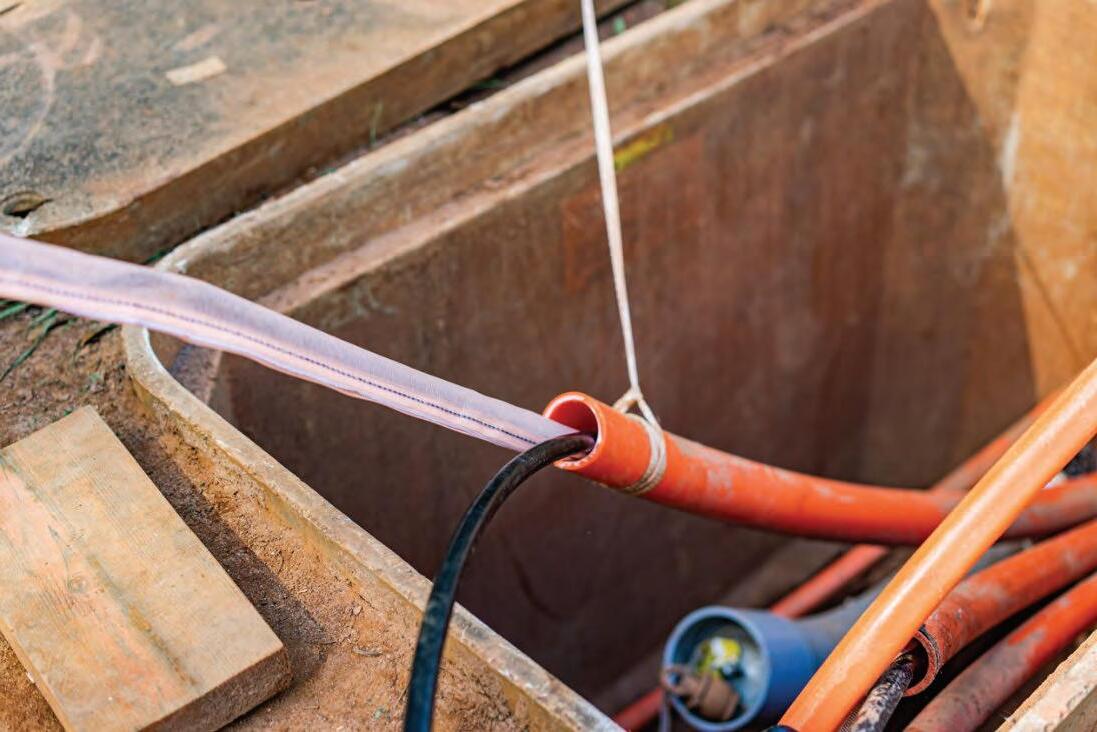

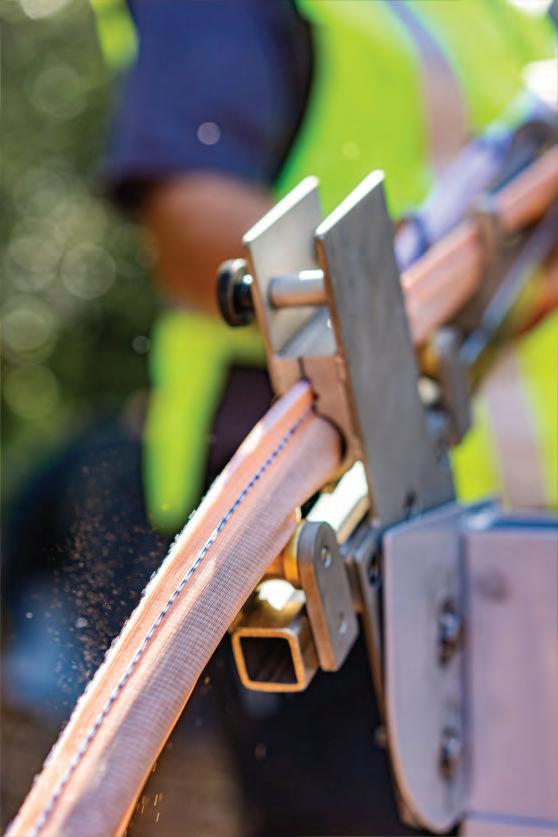
17 Fiber Forward
Ponca City’s Longer Path to Residential Fiber
By Doug Mohney
Centrally located within 90 minutes of Wichita, Oklahoma City, and Tulsa, Ponca City, Oklahoma, is no stranger to broadband. It first started deploying fiber in 1996 to support the city’s private network, gradually adding other public institutions over time, including local schools, the local hospital, and the University Center.

By 2005, the city had expanded its network to serve the business community and town leaders began asking about deploying residential services. However, the city made several false starts before it finally got on track to deploying fiber to homes. “I started with the city in 2016 and one of my priority tasks was to put a business plan together and find a way to make this happen,” said Dave Williams, Director, Technology Services, City of Ponca City. “In the summer of 2017, we began construction in a five-phase project that would cover the entire city limits, a little over 21 square miles.”
The city was able to consolidate phases into three segments and is finishing construction on the last phase now, with around 41 miles of fiber left to install in 2023. Once completed, every home and business within the city limits will be passed by the new network.
One unique aspect of Ponca City’s fiber build is that it will be phasing out its pre-2017 fiber plant and transferring users onto the newer network. “It was more expensive to re-engineer what was there than it was to start over,” Williams said. “The initial fiber network grew on an asneeded basis. There wasn’t any high-level design that went into it. It was literally, ‘Where do we need to go next?’ That left a spaghetti mess. We’ve left it in place and we’re building over it with new fiber.”
All the pre-2017 customers will be transferred over to the new network as time permits or as need arises, with wildlife being the most significant operational headache to the old
network. “About 70% of our repair activity in the outside plant on the legacy side has to do with squirrels,” Williams said. “They are the single largest risk to the operation right now. Those little squirrels, they love to chew on fiber, they’re a monster.”
In the first phases of its new deployment, Ponca City installed nearly all its fiber on poles, taking advantage of the municipality’s utilities access, with latter build phases deployed underground due to the nature of power delivery to homes. “They tend to be more underground in that area of town, so we have 60% to 65% buried in that area from an operational perspective,” said Williams. “I wish we’d done everything underground because of the squirrels. But from a cost perspective, we simply couldn’t. We may in future as routes allow. If the energy department is moving primary lines underground for any reason, they’ll pull the conduit for us. We’ll go back and move the distribution fibers underground at that point.”
Ponca City has passed just over 11,000 homes and businesses with the expectation to pass all the roughly 14,500 locations inside of the city limits as the network is completed, with the expansion attracting new businesses.
“Since we’ve announced the citywide build out, we’ve been able to attract a specialty livestock feeder manufacturer, an aftermarket aircraft outfitter, and IT consulting with a network engineering and security branch and a handful of specialty metal fabrication shops,” said Williams. “We’re estimating 148 new jobs added so far. But the most important part is having fiber broadband puts us on the competitive map. It doesn’t guarantee that we’re going to be selected for new commercial development, but it puts us in the running. Ponca City has a huge advantage offering a small-town lifestyle with access to big city activities in Wichita, Oklahoma City, and Tulsa.”
15 Fiber Forward • fiberbroadband.org
FBA Public Policy Update The Inaugural “Fiber Day on the Hill”
By Marissa Mitrovich, FBA Vice President of Public Policy
The Fiber Broadband Association hosted its first “Fiber Day on the Hill” on March 29th in the Rayburn House Office Building’s Gold Room. The bipartisan event was held in partnership with Honorary Co-Chairs U.S. Representatives Jeff Duncan (SC-03) and Ann Kuster (NH-02).
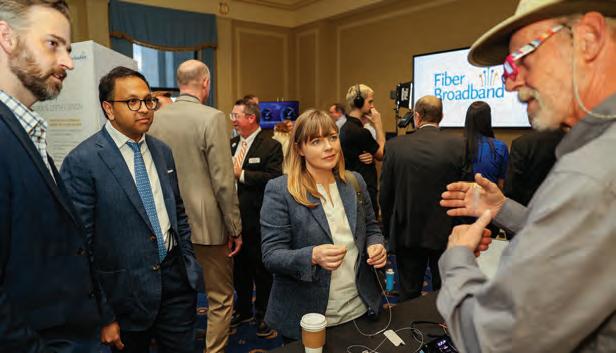
“Fiber is a lifeline for our communications networks and has truly revolutionized the industry with faster speed and greater access,” stated Representative Kuster (NH-02). Fiber Day on the Hill drew over two hundred government participants from over one hundred Congressional offices, the White House, Department of Commerce, Department of Agriculture, and Federal Communications Commission.
FBA premier member Performed Line Products, shared that “30% of her constituents do not have internet, not because they can’t afford it, but because it does not exist.” She thanked the participants and FBA for their work stating, “This is the type of work that is going to make a generational impact, not only eliminating disparities but creating good paying jobs.”
FBA wants to thank all members who participated in this event that made it a great success, including demo participants: Crown Castle, Corning, EPB, Graybar, Nokia, OFS, OnTrac, PLP, RVA LLC. We look forward to seeing everyone again next year on Capitol Hill!
Public Policy Outlook and Update Permitting
The House Energy and Commerce Subcommittee on Communications and Technology held a legislative hearing on broadband permitting on April 19th, “Breaking Barriers: Streamlining Permitting to Expedite Broadband Deployment.” A letter from FBA was submitted for the record, supporting bipartisan permitting legislation that will streamline the process for fiber broadband service providers and their contractors to gain access to public and private rights-of-way and infrastructure, enabling the expeditious deployment of their networks.
One FBA-endorsed bill that was introduced at this hearing by Congresswoman Eshoo (CA-16) is the Community Broadband Act, which will enable all communities to have access to experienced broadband providers that include municipalities, Tribes, utility co-ops, public-private partnerships, and nonprofits across the U.S.
The energy of the event mirrored this enthusiasm as Members of Congress and senior policy staffers experienced five interactive demo stations presented by FBA members. Demonstrations explained “What is fiber?” and how it improves U.S. households, communities, and the economy – including through facilitating 5G, precision agriculture, education, healthcare, and economic opportunities. The displays also featured an opportunity to learn how to splice fiber, which was a very popular activity, and illustrated the environmental and sustainable benefits of fiber and how fiber technology is able to scale and power future connectivity for more generations to come.
Guests were also inspired by words from other Members of Congress who attended the event. Representative Shontel Brown (OH-11), who represents the Congressional District for
Multiple ideas to help streamline permitting were discussed and FBA is continuing to work with the Committee and Congress as these bills are advanced.
Letter to National Telecommunications and Information Administration (NTIA) from Republican Senators
Senate Republican Commerce Leaders sent a letter to NTIA Administrator Davidson with concerns related to the Broadband Equity, Access, and Development (BEAD) Grants program. FBA shares many of their concerns about select requirements they mention. For instance, we share their views that government should not regulate broadband rates, but we strongly disagree with their sentiments that fiber shouldn’t be the first choice for closing the digital divide.
FBA CEO Gary Bolton stated, “a decision to deploy “good enough” technology is a decision to leave a community behind. Every American deserves the best technology, especially when it is being paid for by their own tax dollars.”
16 Fiber Forward • Q 2
Taking in the fiber splicing demo are (L to R) - Justin Faulb, Chief of Staff and Legal Advisor for Wireline and National Security, Office of FCC Commissioner Starks; Shiva Goel, Legal Advisor for Wireless and International Issues, Office of FCC Commissioner Starks; Austin Bonner, Assistant Director for Spectrum and Telecom Policy, Office of Science and Technology Policy, The White House. Source: FBA.
Middle Mile Grants
We know many FBA members are anxiously awaiting NTIA BEAD middle mile grant award announcements. Secretary Raimondo testified on Wednesday, April 26, 2023, before the Senate Appropriations Subcommittee on Commerce, Justice, Science, and Related Agencies at a hearing entitled “A Review of the President’s Fiscal Year 2024 Funding Request for the Department of Commerce.” In her testimony, she said that they are working very hard to get the middle mile money out by the end of June.
Additionally, the much-anticipated Build America, Buy America waiver for NTIA’s Middle Mile Grant Program was signed and issued by NTIA Administrator Alan Davidson on April 18th. Fiber optic cable is determined to have a sufficient domestic supply. Electronic and connectivity products were included. The waiver is in effect for the grants issued between March 1, 2023, and March 1, 2024, and will be in effect for the duration of these projects with NTIA continuing to review the need for waivers every six months. This waiver is for middle mile grants only and any needed waivers for the BEAD grant program are unrelated and being considered separately.
Broadband Equity, Access, and Development Grants
As NTIA works diligently to shape criteria and terms for BEAD grants, FBA has been actively engaging with the Administration on the critical topics that will impact the participation of our membership in the grant program.
FBA submitted comments to the Office of Management and Budget (OMB) on their February 9, 2023, proposal to establish a new part 200 C.F.R. Chapter I (for Build America, Buy America (BABA) Preferences for Infrastructure Projects) and to review 2 C.F.R. § 200.322 (Domestic Preferences for Procurements). We have heard that OMB is currently reviewing comments and expect to see clarification early this summer.
Additionally, NTIA is working on their own guidance for BABA and the BEAD program; a summer timeline is anticipated.
On May 1, 2023, we submitted comments to NTIA in response to their Request for Comment on the National Environmental Policy Act Procedures and Categorical Exclusions (CEs) as it related to IIJA Broadband Grants. FBA supports the proposed structure for NEPA review but encourages a closer look at the CEs, as we share the goals of Congress and the Administration for expeditious deployment of broadband and would not want to have deployments delayed unnecessarily.
American Rescue Plan Act, Capital Projects Fund
On May 17th, 2023 the Department of Treasury issued Final Part 200 Guidance for the State and Local Fiscal Recovery Funds and Capital Projects Fund. FBA submitted comments previously to Treasury on April 11, 2023 while in draft form, stating that we appreciate the Treasury’s efforts to develop the Guidance and believe it strikes a reasonable balance in the four requirements that are addressed
between the interests of the Treasury to ensure federal funding is spent responsibly and the need to facilitate the deployment of broadband infrastructure to locations without service. This Guidance should help facilitate the deployment of robust, reliable broadband infrastructure and further maximize use of limited funding.
Extremely High Cost Per Location Threshold
In implementing the $42.5 billion BEAD Program, NTIA demonstrated leadership by prioritizing the deployment of all-fiber connectivity – the most capable, reliable, and durable last-mile broadband network technology. States and territories now have the task of making this fiber priority a reality – most importantly by establishing the Extremely High Cost Per Location.
To help states and territories set their thresholds, the Fiber Broadband Association has joined with the business consulting firm Cartesian to develop a methodology based on sound economic and market underpinnings to which states and territories can apply their unique “facts on the ground.” FBA has submitted this methodology for consideration in official comment submissions to California (April 17, 2023) and Nevada (May 1, 2023) and has shared it with all state broadband leaders.
Rural Utility Services (RUS)
As Congress begins to consider the Farm Bill and the reauthorization of RUS, FBA joined a coalition letter to Congressional Agriculture Leaders, sent on March 14, 2023. The coalition requests a codification of a minimum service level commitment of 100 Mbps symmetrical broadband service in the Farm Bill for any applicant seeking funding through ReConnect. Our hope in raising the minimum standard is to ensure that every American to benefit from the Farm Bill will have access to high-quality, high-speed fiber broadband.
Fiber Broadband Association Public Policy Leadership
The FBA Public Policy Committee is led by co-Chairs Chris Champion, Vice President, Government Affairs, C Spire, and Jordan Gross, Manager of Federal Government Affairs, Corning. Ariane Schaffer, Government & Public Policy, Google Fiber is the FBA Board Liaison. If your company is interested in joining the public policy committee, please email mmitrovich@fiberbroadband.org to join.
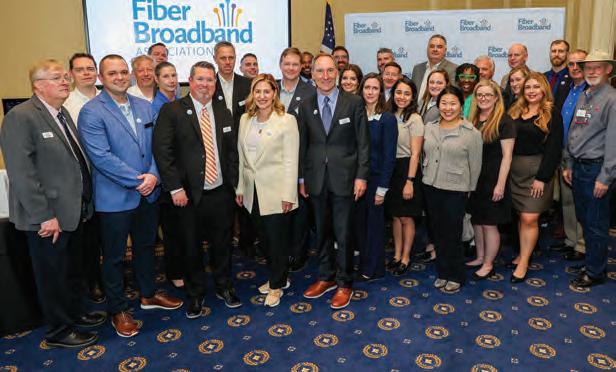
17 Fiber Forward • fiberbroadband.org
FBA staff and members at “Fiber on the Hill” Day. Source: FBA.
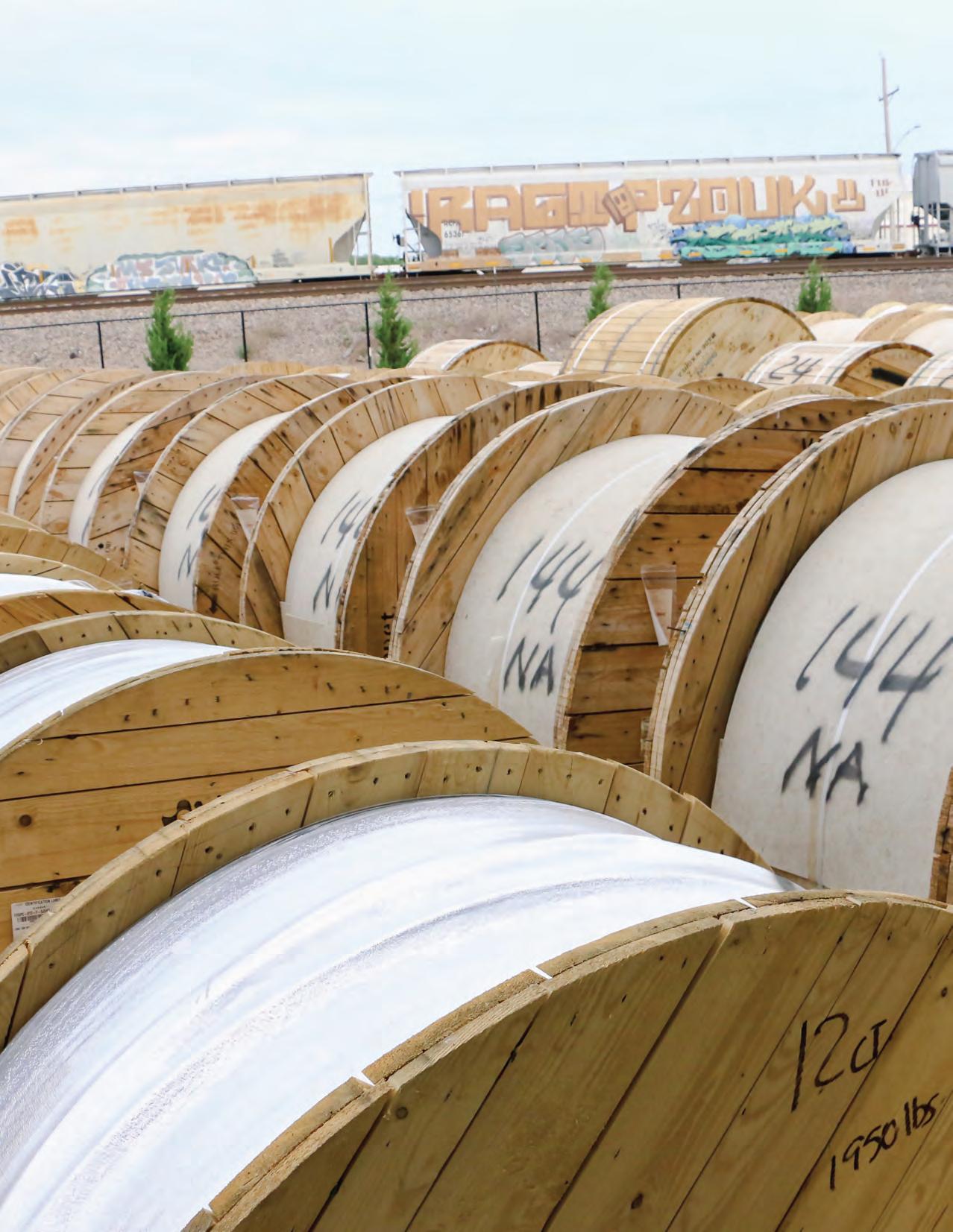
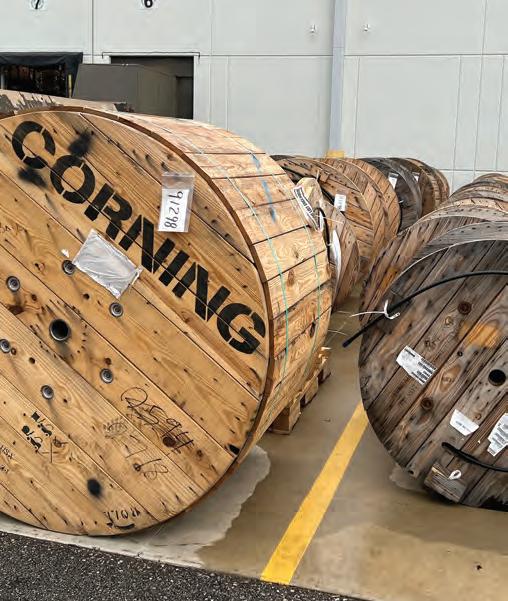



Adams Cable Equipment Adams Cable Equipment
The Disruptive & Transformative Power of Fiber

19 Fiber Forward • fiberbroadband.org
Inside an Oklahoma public library telehealth space. Some rooms will be equipped with Bluetooth-enabled blood pressure cuffs and other connected medical devices. Source: Oklahoma Department of Libraries.
Fiber is a catalyst for change and fundamental for innovation in any market, a point that seems to be lost in broadband policy discussions advocating for “technology neutral” solutions that are destined to become obsolete within a few years of installation. Providing a once-ina-generation infrastructure solution that is long-lasting and future-proof, fiber broadband networks have demonstrated their worth in generating jobs and longlasting economic and social benefits for communities that have them.
Conversely, communities that did not have fiber were sorely pressed to deliver effective remote learning solutions for students and teachers during the pandemic, highlighting the need for affordable, scalable, and reliable broadband networks capable of delivering the speeds and low-latency necessary to support families by enabling work-from-home, telemedicine availability, and better energy usage, just to name a few services.
In sync with Fiber Connect 2023’s theme of “What Fiber Disrupts Next,” Fiber Forward examined the many ways fiber has already transformed the economic and social landscape of communities and businesses across America. Telemedicine, Smart City, and Smart Grid applications were obvious choices, given the availability of organizations and businesses willing to speak with us. We also attempted to include e-commerce and streaming companies, but the companies we contacted in those areas either failed to get back to us by deadline or declined a request to be interviewed at this time.
Most of us are familiar with and have had at least one virtual visit with a healthcare professional, with pandemic healthcare measures driving the simple use case of a one-to-one video call between patient and doctor or therapist. This model only scratches the surface of what is possible using connected devices and enhanced processes to provide accurate and timely information to doctors and specialists. Telemedicine may prove to be a lifeline for rural hospitals struggling to stay open as well as a lifesaver for the people they serve.
Traffic jams are the bane of modern society. They frustrate drivers and passengers alike, delay the delivery of goods and services, make children late for school and everyone late for dinner and parties. It’s easy to overlook fiber’s underground role in managing city traffic because drivers are focused (as they should be) on stoplights and the car in front of them while commuters monitor bus arrivals and route speeds through a smartphone app.
Traffic management is the original Smart City application with fiber a quiet partner in the daily commute, collecting data via sensors and closed-circuit cameras for processing and carrying the signals for subtle
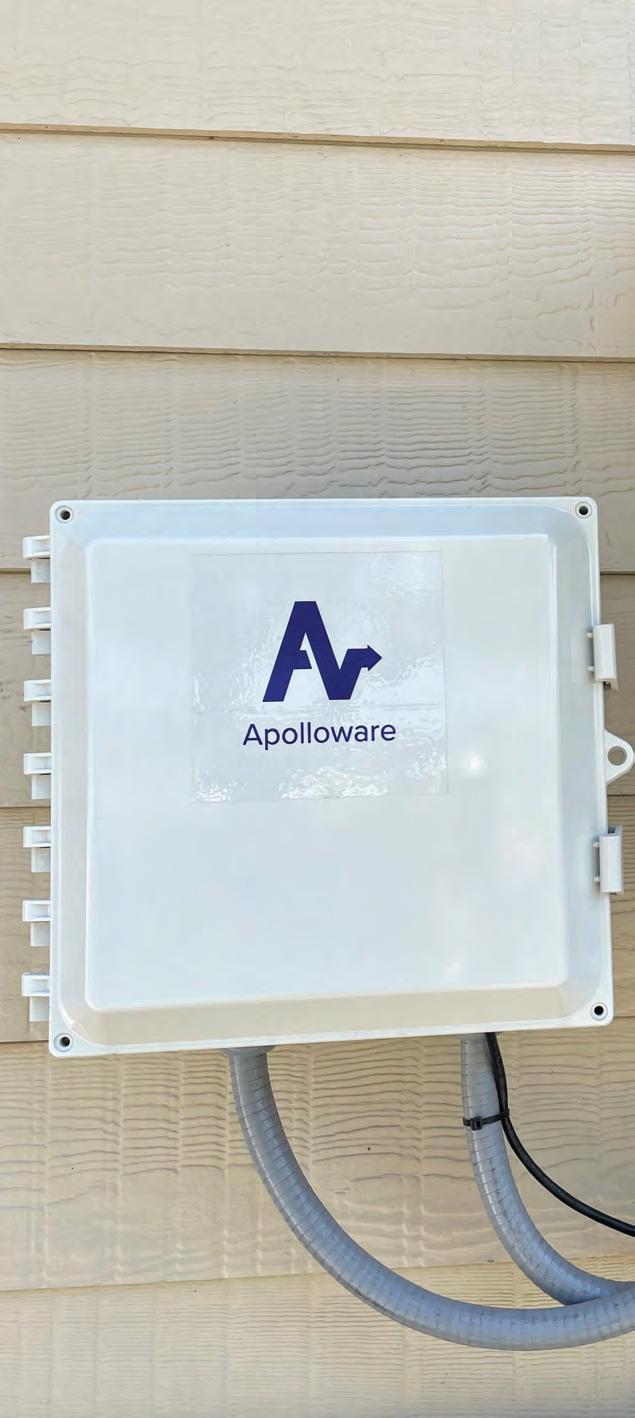
20 Fiber Forward • Q 2
Leveraging its SmartGrid, Bandera Electric Cooperative has created its own full-home power monitoring system. Source: Bandera Electric Cooperative.
adjustments to traffic light timing to speed up car flows and bus routes and well as clearing the way for emergency vehicles. Local governments are building upon baseline Smart City sensors and networks to enhance public safety, processing data via analytics and mining it using AI for further insights to assist in critical decision-making. Smart City data can also provide valuable insights for the development of new city services and guide economic investment.
Similarly, Smart Grid has evolved from simply minimizing power outages and reducing meter reader truck rolls through broadband to a complex mesh of applications bringing together home energy usage, renewables, battery storage, and electric vehicles with traditional utility electric generation and purchasing. Cooperatives continue to refine and enhance their strategies and it’s difficult to predict what the Smart Grid of tomorrow will look like because there are so many innovative approaches being developed at the grassroots level.
Finally, please keep in mind that the examples and places we showcase here are just a sampling of the ways fiber is disrupting and transforming businesses. We invite you to discover more at Fiber Connect 2023 in Orlando, Florida, on August 20-23, 2023.
More Fiber, More Telemedicine Options in Oklahoma
Most of us are familiar with a basic telemedicine model where we can consult with our doctors over the equivalent of a Zoom call using a HIPAA-compliant video client. But what if you don’t have a doctor, are in a living situation where you don’t have a computer, or do not have the privacy necessary to arrange a virtual visit? Or what if you are in a rural hospital and need a specialist?
Oklahoma is providing answers to these questions, using fiber as the medium for providing increased access to essential health care for more people, and enhanced care in rural hospitals with 24x7 access to on-call specialists. Fiber is supporting both of these approaches, working toward the same results of better outcomes and lower health care costs.
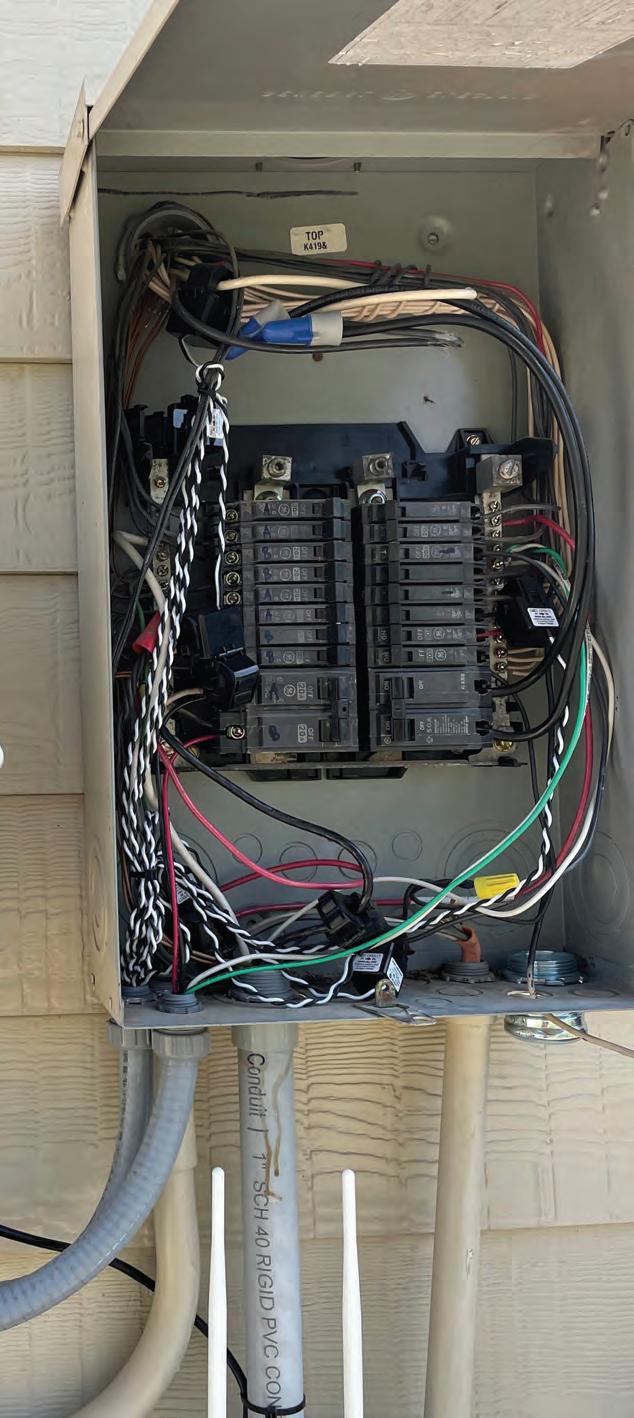
Rural libraries are anchor institutions in nearly all states, providing free internet access to local citizens for schoolwork and jobs. Oklahoma is one of many states looking to expand the role of the public library into healthcare hotspots. The state has secured funding to build an initial six pilot library telemedicine sites and would like to eventually establish 20 sites as a part of its obesity prevention efforts.
“Where can we get fast reliable internet connections?” said Doug Olivo, Director, Rural Care and Telehealth Services, Oklahoma Complete Health, a Managed Care
21 Fiber Forward • fiberbroadband.org
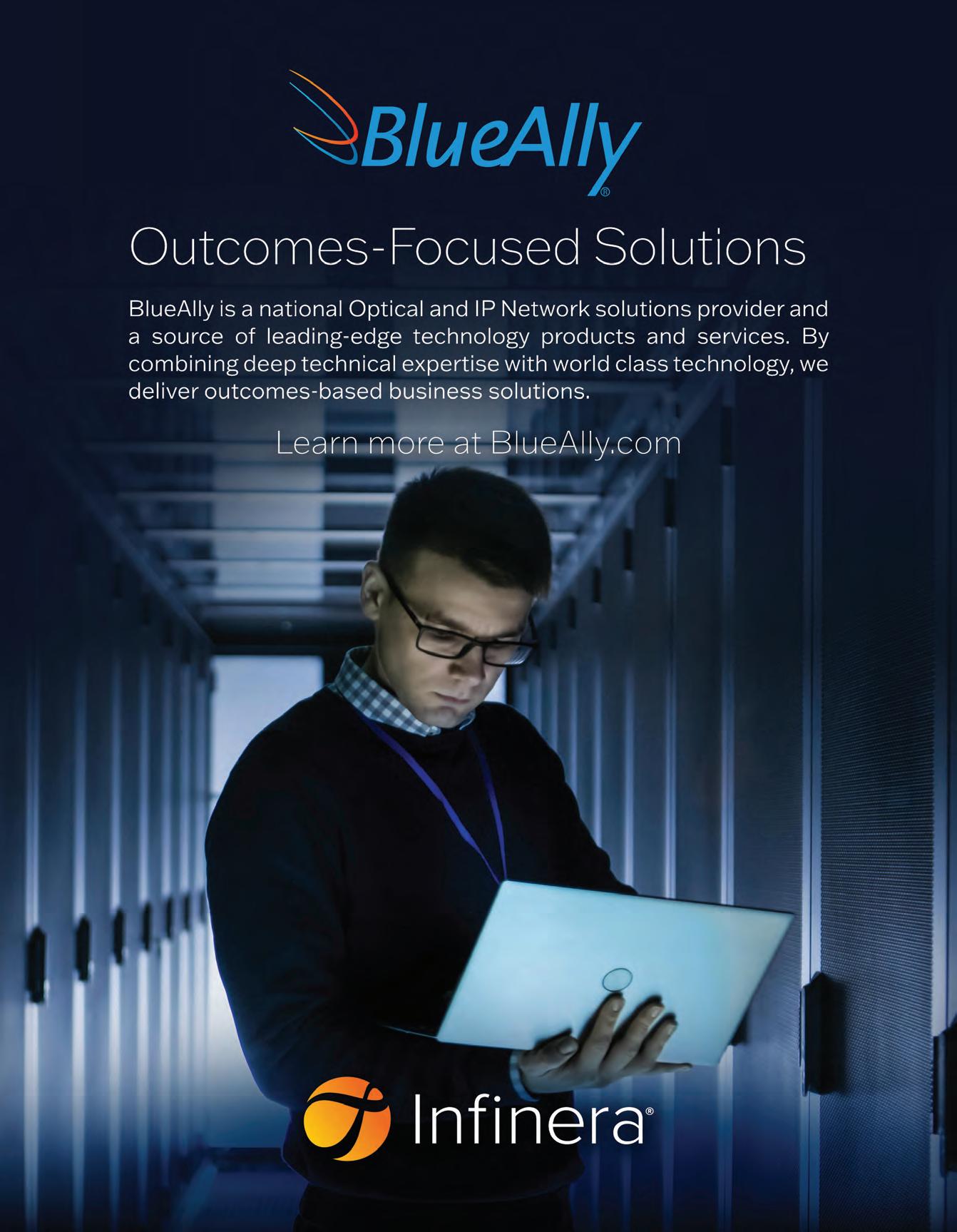
Organization and subsidiary of Centene Corporation (Centene). “For many small towns, the library is the place to find a reliable internet connection to support schoolwork and job responsibilities. Unfortunately, they are not typically equipped with private individual spaces conducive to telehealth visits.”
Oklahoma’s answer is to setup a soundproof meeting space within the library that provides enough space for a patient and an assistant caregiver, along with a laptop and simple diagnostic equipment that connects via Bluetooth to the computer for collecting basic vital information. Since the library is an anchor institution with fiber, adding telemedicine is possible.
Oklahoma Complete Health’s role has been to lend healthcare industry subject matter expertise to do things like advise on what diagnostic equipment to put in the booths, connect each location to local providers, and provide recommended telehealth training resources to digital navigators. By helping to create more accessible healthcare in the library, Oklahoma Complete Health enables its members to talk to a doctor on a proactive and preventive basis before an issue escalates into a much more expensive ER visit.
“Aiming for better outcomes and lower healthcare costs, an additional benefit to this program is the virtual connection to local doctors in the event care requires a transition to in-person visits. That relationship would already be established. Oklahoma is fifth in the country for risk of rural hospital closures. If we can link more patients to rural hospitals for care, we may be able to positive impact the sustainability of our medical infrastructure”
Rural library telemedicine access provides additional benefits to patients as well. People might have to travel up to three or more hours to go into the city to get surgery or other specialized treatment. “They may go back to their home and never follow up with their specialist,” Olivo said. “The library provides them with a convenient way to do follow up in their community.”
Fiber is also providing rural Oklahomans with increased access to critical care at their local hospitals, especially in time-critical situations where every minute counts. The OU Health University of Oklahoma Medical Center is teaming with rural hospitals in the state to provide oncall medical specialists on a 24x7 basis for consults of newborn babies and stroke patients.
“What makes these hospital-based programs unique and extremely important for patient care is that they are able to treat a higher level of acuity,” said Emily Sederstrom, Administrative Director of Digital Health at OU Health. “With stroke, it is so important because time is brain.
You need to have that assessment and to identify if it is a stroke and what type of stroke, because that really determines the next stage of treatment. With the NICU babies, those are extremely emergent situations as well.”
The OU Health telemedicine programs are built around the specialists on-staff within the hospital system and the ability to observe and communicate with the rural hospital on-site medical staff in a secure fashion. OU Health provides a telehealth cart that includes a 4K remote controlled video camera with a 10x zoom, HIPAAcompliant software to ensure a secure video connection, and proactive 24x7 monitoring of the network connection between OU Health and a remote site to guarantee connectivity when it is needed.
The remote site will initiate a request for a telehealth consult to OU Health’s transfer center, who then immediately notifies the on-call specialist. A specialist will then login via secure network connection to the specific telehealth cart and start the assessment of the patient. Physicians can manually control and zoom the 4K cameras to get more details of the situation. For stroke patients, the specialist can remotely review CT scans. There are also options on the carts to add digital peripherals such as stethoscopes and otoscopes.
OU Health has teleNICU carts at three facilities and telestroke carts at three facilities with the farthest a four-hour drive away, but it’s not just about plugging in the hardware. “A big piece of the program is that our physicians have to be credentialed at those hospitals, and clinical workflows and protocols have to be established and updated,” Sederstrom said. “It’s a program development style of implementation. It’s not just plug the cart in and you’re automatically connected.”
The telestroke consultation is integrated into a hospital’s existing stroke protocol, with OU Health providing a neurologist that can evaluate the CT and conduct a full neurological assessment of the patient. Once the assessment is done, the neurologist can provide a recommended treatment plan which the on-site emergency room physician and hospital can accept.
Having the telestroke consultation available provides hospitals with the comfort to rapidly administer tPA, a clot-busting drug. “Not all hospitals stock tPA,” Sederstrom said. “If you administer tPA when you don’t need to have a clot-busting group it can lead to extremely bad outcomes, so a lot of hospitals who don’t have a neurologist on site typically don’t administer tPA. By having a telestroke program, the value is they can administer tPA and they have the confidence of having a neurologist recommendation on it as a part of clinical best practices.”
23 Fiber Forward • fiberbroadband.org
The teleNICU program has been in operation since 2018 while the telestroke program came online in 2021.OU Health is looking at other areas for expansion of their telespecialist programs. “We’re a Level I trauma center, so our next area we really want to add to our portfolio is a teletrauma program.” Having a teletrauma program would enable OU Health to evaluate some types of non-critical injuries that don’t need immediate transport and the attention of a high-end trauma center. Perhaps it’s not a hospital-level service that’s needed for a patient. But once the swelling comes down, they can come to our trauma clinic and then be treated from there. And so that’s definitely the area we’re looking at next.”
Speeding Denver’s Traffic on Glass
In a major metropolitan area, keeping traffic moving is a vital task for governments. A complex network of infrastructure including stop lights, sensors, vehicle radios, controllers, and a network to link and control everything is part and parcel of modern infrastructure. Fiber is the digital road supporting the physical roads in places like the City of Denver.
DAFNE, the Denver Area Fiber Network Ecosystem, started laying fiber in 1998. Today, the network consists of 248 miles of conduit and over 300 miles of fiber cable throughout the area. A combination of multimode and single mode fiber links around 7,000 devices to a central control center, this includes around 95% of the 1,300 traffic signals and nearly 800 CCTV cameras, and dark fiber provided to other government departments and associated city partners.
With applications such as IoT, security, and connected vehicles increasing demand for fiber throughout the city, DAFNE is changing as well, modernizing its network for a growing set of requirements for uses by all departments.
“When we first built our system, it wasn’t as critical. It’s something that could go down for a day or two, so it was built out as a hub and spoke system. There is not as much redundancy and resilience because we are just trying to get communications and the traffic signals will still run without fiber connectivity,” said Josh Jones, Senior Engineer, Department of Transportation and Infrastructure (DOTI), City of Denver. “As we are transitioning to this newer age where it’s critical to have devices up and running, Smart City and cars needing to talk to the infrastructure, we’re working on building our redundancy and resilience throughout our network.”
At present, the network is built around a hub and spoke architecture with 12 hubs around the city and the largest hub has 600 devices going into it. The DAFNE network was originally built using multimode fiber, because it
was more affordable, but now uses a mix of legacy multimode and newer single mode fiber since the cost of single mode has come down and the technology is easier to use, according to Jones.
Much of the original fiber deployed downtown is a paltry six strands. “They are really painful,” said Jones. “We lose our capacity real quick down there.” DAFNE is in the process of deploying more capacity to areas in need, but running a combination of multimode and single model fiber is another challenge.
“Hybrid cable is very hard to procure,” Jones said. “We do have a lot of hybrid cable in stock and we’ll loan it out to contractors who will then put in an order to replace our stock.” Phasing out the multimode fiber and equipment is being done on a gradual basis, leveraging multimode to single mode small form-factor pluggable (SFP) terminators where possible.
The City of Denver has been able to leverage the wealth of fiber deployed for the DAFNE network while ensuring the traffic system remains the primary focus, providing dark fiber for enterprise users as a separate network. “Ten to 15 years ago, Denver was trying to be a good partner in the region. There
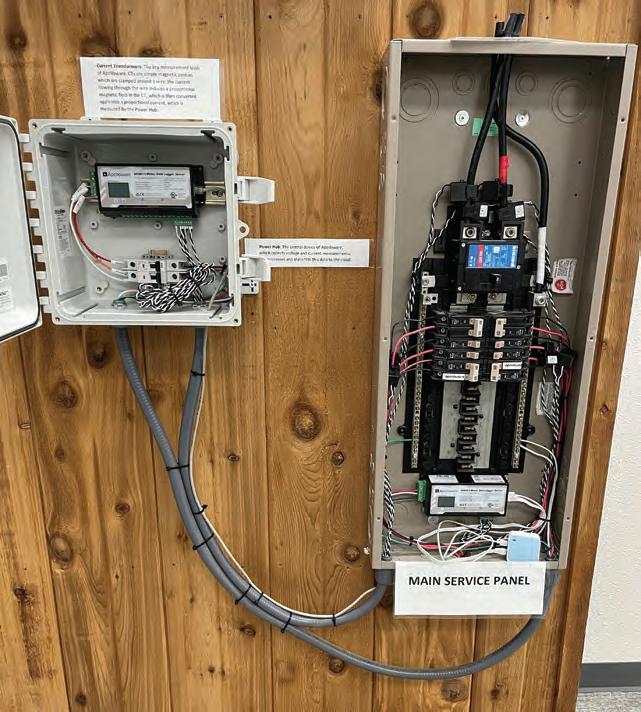
24 Fiber Forward • Q 2
Bandera’s behind-the-meter power monitoring system is installed in all new construction in their service area. Source: Bandera Electric Cooperative.
were a lot of handshake agreements for fiber. A lot of intergovernmental agreements (IGAs). We have multiple buildings we connect, including the Zoo, parking garages, libraries,” said Jones. “We supply fiber for the 911 call center, that was the first circuit where we built in true redundance and resilience with our enterprise users.”
In addition, DAFNE provides fiber to the Colorado Department of Transportation (CDOT), UC Health healthcare system, RTD regional transit department and connectivity to the City of Lakewood so their traffic management centers can work together, as well as a connection to the city of Aurora to the east.
“It’s been an interesting partnership with CDOT,” said Jones. “We ride on their cable, and they ride on our cable, we are in the process of reviewing and advising agreements to ensure they meet the needs of the current infrastructure. We’re in the process of memorializing a lot of understandings, formalizing maintenance, when we can get into handholds, that has been a constant evolving need.”
Governmental and non-profit organizations that have approached DAFNE for access to fiber need to understand the current operational boundaries of the
existing network and its limits in terms of redundancy, resilience, and ability to perform work outside of normal business hours.
“A lot of connectivity to our enterprise network will come in and ask, ‘Can you give me fiber?’,” said Jones. “The answer is ‘Yes, but it’s not redundant.’ If you want redundancy, we will need budget and we will get you full redundancy, but it could be up to double the cost. We’ve been starting to do a lot of service level agreements of how we support those connections. If we have a fiber outage we are able to address it during normal business hours as we don’t have an after-hours crew. This directly impacts our partners needs to build redundancy for their connections. We don’t usually have a backup and we have to work through normal business hours, and they might be down for the weekend.”
One of the vulnerabilities to the fiber network are the same vehicles that it monitors. The initial build placed fiber through aboveground cabinets. Hit the cabinet, break the fiber. “We don’t control when knockdowns happen,” said Paul Dreher, Engineering Project Manager, DOTI, City of Denver. “For example, we had a knock down on Saturday that took down eight intersections.” New cabinet installations are designed and installed to decrease the likelihood of physical damage.
Additionally, Denver has begun retrofitting cabinets with connections which protect the termination, helping to decrease the time it takes to splice and repair network interrupts.
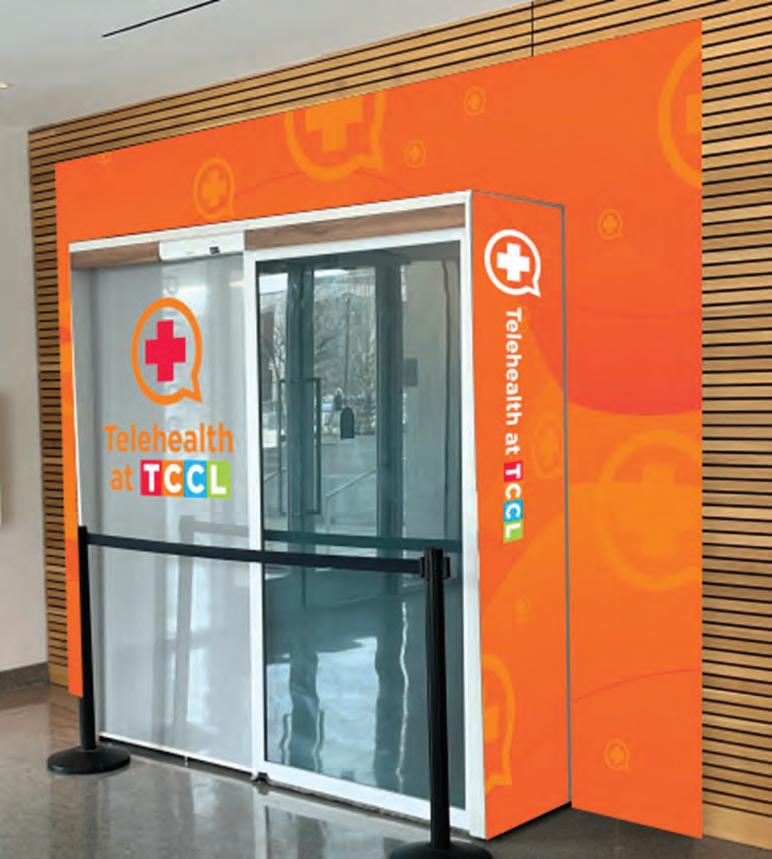
Devices throughout the city provide information on the state of traffic in the confines of Denver for immediate use and future planning. “We utilize the CCTV cameras for observation of the transportation network and engineering studies,” said Dreher. “From these studies, we’re able to make data-driven decisions for the general public. We also are pulling transit transportation data, bicycle or vehicular counts, on our detection cameras and our stop bars. That also provides presence, we’re able to pull that information and again, generate those data driven decisions, and then run reports and monitor all the other devices that we have out there.”
Through various federal grants, Denver is implementing advanced technologies on top of its existing fiber to improve safety, efficiency, system performance, and infrastructure return on investment under the Advanced Transportation and Congestion Management Technologies Deployment program.
“One of our uses cases is with snowplows where it can talk to the signal so plows don’t stop at a red light which requires them to lift their blade,” said Jones. “They can just keep moving through the light to be able to move that snow
25 Fiber Forward • fiberbroadband.org
Oklahoma public libraries are adding dedicated private spaces for telehealth visits, such as this area. Source: Tulsa City-County Library, Oklahoma Dept. of Libraries.
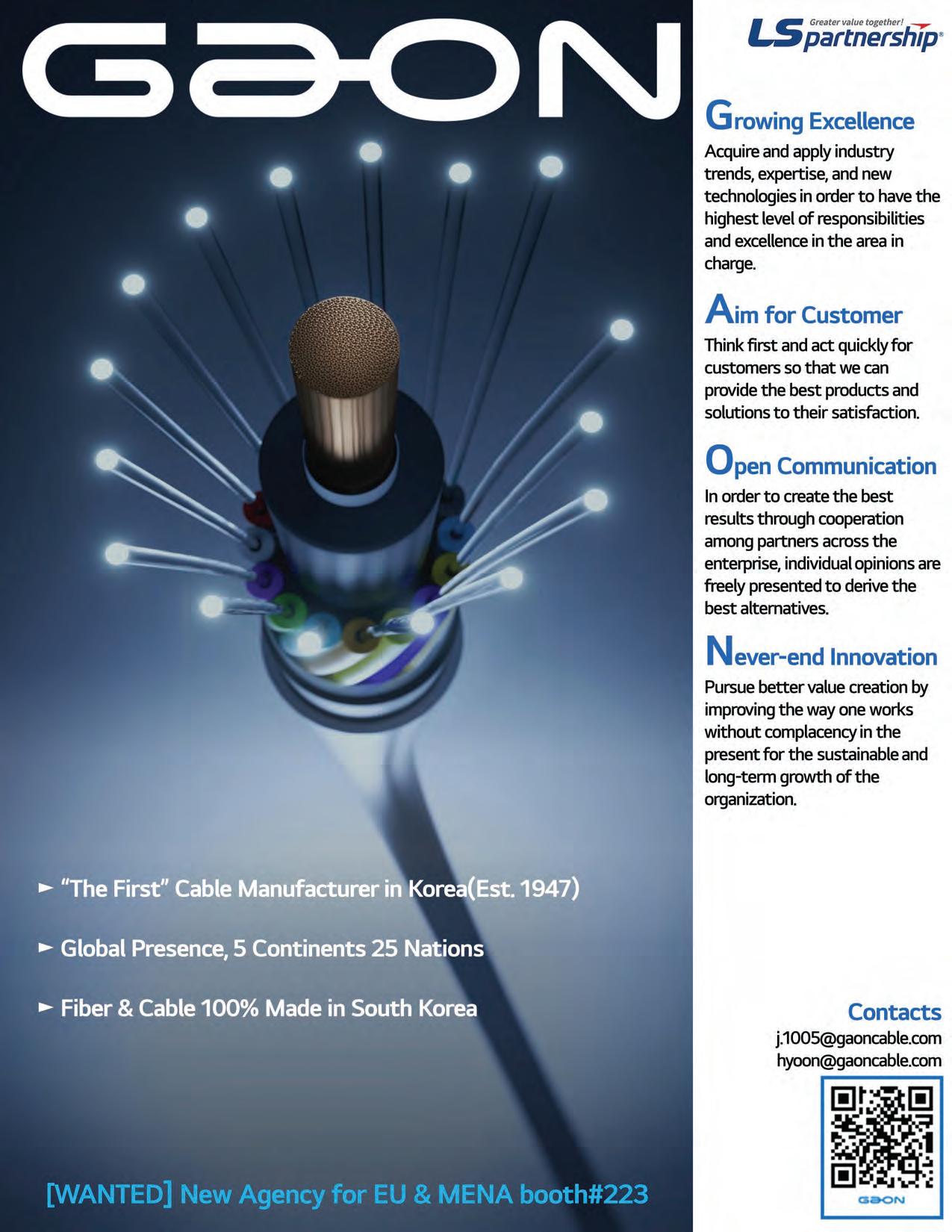
out of there. Transit signal priority has been a big use case with buses to be able to use the onboard RSU to give a priority for the light to keep the buses on time, but not a top priority like an ambulance or other emergency vehicle.”
Smart Membership Requests Smart Grid in Texas
Bandera Electric Cooperative, like many electrical cooperatives around the country, implemented a full service end-to-end smart grid solution as a complement to its fiber broadband deployment. Unlike some, construction of a large-scale fiber optic network to support both applications wasn’t initiated by the co-op’s leadership.
“Initially, we had fiber optics to our substations and that was primarily for electric system operations,” said Bill Hetherington, CEO/GM at Bandera Electric Cooperative, Bandera, Texas. “When I got here in 2013, we did a membership survey as a ‘Hey, how can we improve your quality of life?’ typical co-op stuff. The membership responded, ‘We need internet access.’ Okay, but we are an electric company.
“It was really driven by the membership, taking a grassroots approach. I walked into our board meeting in 2016 with 250 people who signed a petition wanting the co-op to bring broadband. At the same time, I knew that deploying a fiber optic network to support broadband would allow me to improve the resiliency and efficiency of the electric system. That’s how it came about.”
Bandera Electrical Cooperative, located around 50 miles northwest of San Antonio, has over 30,000 members and around 40,000 electric meters. The 1,500-mile fiber network passes 82% of its members and has 12,000 fiber broadband customers. In addition, Bandera developed a real time energy management platform, called Apolloware, which provides transparency, enhanced functionality and deeper insight through data analytics. This platform is a combination of software and electric usage sensors that monitor power usage, generation and storage behind the electric meter, providing granular data reporting down to the appliance level.
The fiber network provides the co-op with opportunities to reduce costs, improve both energy efficiency and productivity, as well as improve reliability. “To do all of that, we need data, we need analytics, and we need technology,” said Hetherington. “Throughout our electric system, the network is utilized both for broadband and telecommunication services that are also the backbone of the smart grid, that being distribution automation, automating switches, interconnecting substations between each other so that we could isolate and restore power outages quicker. With Apolloware, which is technology to deploy behind the meter, we are integrating what’s going on at the edge into our grid”.
Currently, 1,200 co-op members have signed up to outfit their existing households and businesses with the Apolloware kit, made up of a standalone data logger and sensors that go around each circuit coming out of the breaker box, enabling real-time measurement beyond the meter.
New construction will automatically get Apolloware and fiber installed as a part of their new connection to Bandera’s power grid. “If you’re building a new house, you’re going to get it all,” said Hetherington. “If you want broadband, you can buy broadband. If you want to have monitored energy services and participate in energy efficiency programs, you can opt into that.”
With the full-throated support of its membership for fiber, Bandera started rolling out its smart grid to its members in 2017, including the automation of switches and connecting electric meters as well as going beyond the meter to monitor appliances using Apolloware. “We’re pulling data from air conditioners, pull pumps, and well pumps,” Hetherington said. “We envision that electric vehicles and solar and batteries are all coming in. Those will all be a part of the smart grid, even though they’re behind the meter. That’s our definition of smart grid.”
Apolloware was created to meet a need in 2017 for its members who had installed solar panels to understand what their third-party equipment was doing. “My customers were calling in and complaining. ‘I just put
(cont. on page 58)
27 Fiber Forward • fiberbroadband.org
When I got here in 2013, we did a membership survey as a ‘Hey, how can we improve your quality of life?’ typical co-op stuff. The membership responded, ‘We need internet access.’ Okay, but we are an electric company.
– Bill Hetherington, CEO/GM, Bandera Electric Cooperative

17 Fiber Forward Navigate funding applications, hit construction KPIs, and simplify your reimbursement process. We’ve got everything you need to make BEAD work for you. Plus, we begin with a free feasibility study, so you have all the details to make confident decisions for your community. 870-790-2324 • broadband@irby.com Learn how our turnkey solution can help your community win the broadband game. FEASIBILITY ENGINEERING MATERIALS & LOGISTICS PROJECT MANAGEMENT SUBSCRIBER MANAGEMENT BEGIN WITH A FREE FEASIBILITY STUDY Proven broadband solutions for BEAD and beyond.
Fiber Photos
A glimpse into Fiber Broadband Association’s recent events.

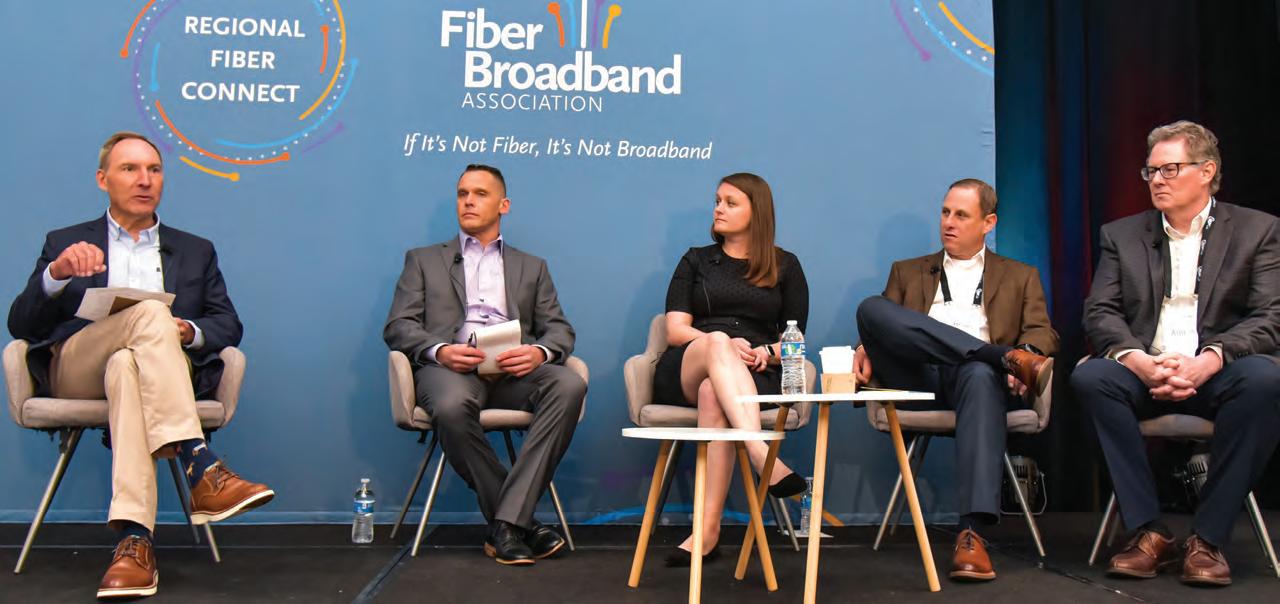
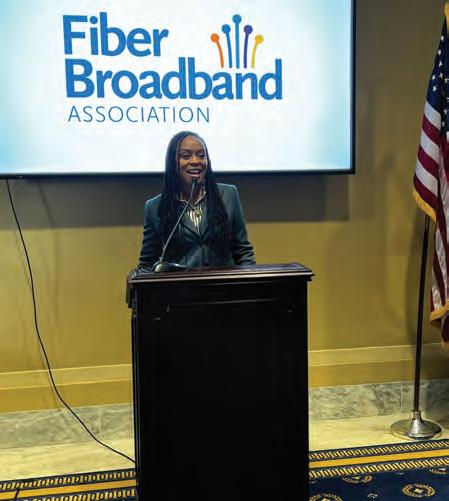
29 Fiber Forward • fiberbroadband.org
Source for all photos: FBA.
FBA President and CEO Gary Bolton leads an expert panel to explore rural broadband imperatives at the Oklahoma City Regional Fiber Connect event, featuring NRECA’s Katie Cullenton, NTCA’s Brian Ford, Accord and SCI REMC’s James Tanneberger, and MyTRA Consulting’s August Zehner.
Panelists at the Raleigh Regional Fiber Connect event explore supply chain issues: KGPCo’s Joe Baeumel, Nokia’s David Eckard, OFS’ Mark Boxer, AT&T North Carolina’s Trey Rabon, and moderator FBA Board Member and Graybar’s Scott Jackson.
Congresswoman Shontel Brown attended FBA’s Fiber Day on the Hill in March in Washington, D.C., offering remarks in support of FBA’s mission to bridge the digital equity gap with fiber broadband.
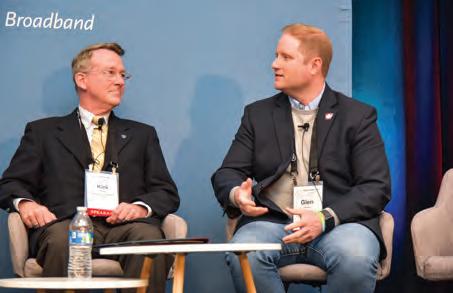

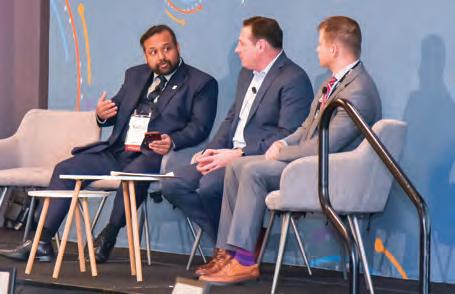
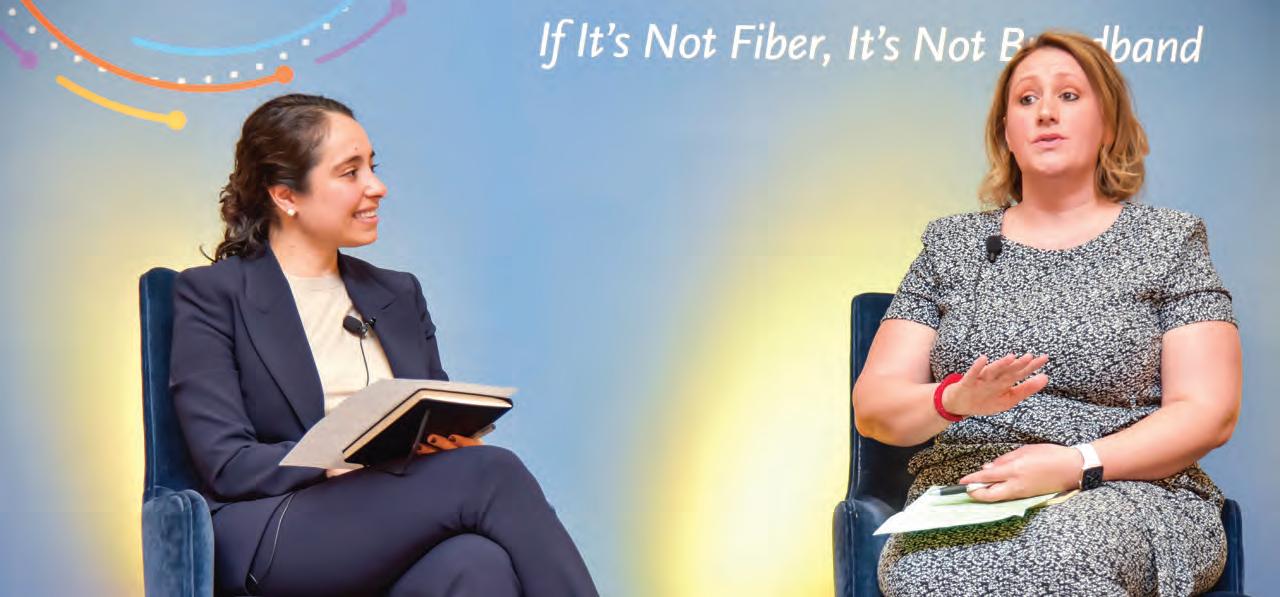
30 Fiber Forward • Q 2 Source for all
photos: FBA.
Calix’s Jeff Brown explores how to build and sustain customer experience during FBA’s Raleigh Regional Fiber Connect. The panel was moderated by FBA Board Member and Utopia Fiber’s Kimberly McKinley and also featured OnTrac’s Joseph Jones “JJ” and FBA Board Chair and Shentel’s Jeffrey A. Manning
FBA Board Member and Google Fiber’s Ariane Schaffer leads a fireside chat with Amy Huffman from the National Digital Inclusion Alliance at the Raleigh Regional Fiber Connect event.
Arkansas State Broadband Director Glen Howie and Oklahoma State Broadband Director Kirk Martin explore how fiber supports local communities at the Oklahoma City Regional Fiber Connect event.
The Oklahoma City Regional Fiber Connect event included a fireside chat with moderator, Sachin Gupta from Centranet, chair of Broadband Governing Board, Mike Fina and chair of Oklahoma Broadband Expansion Council, Dr. Brian Whitacre.
Source for all photos: FBA.
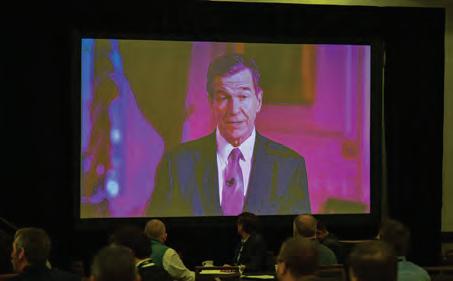
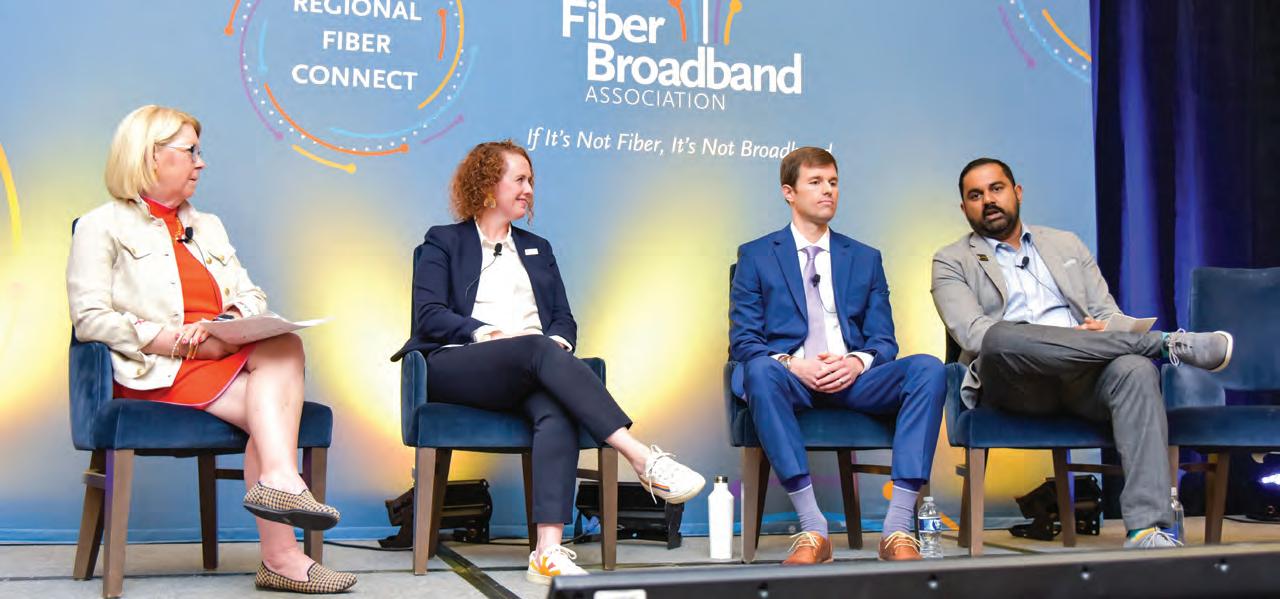
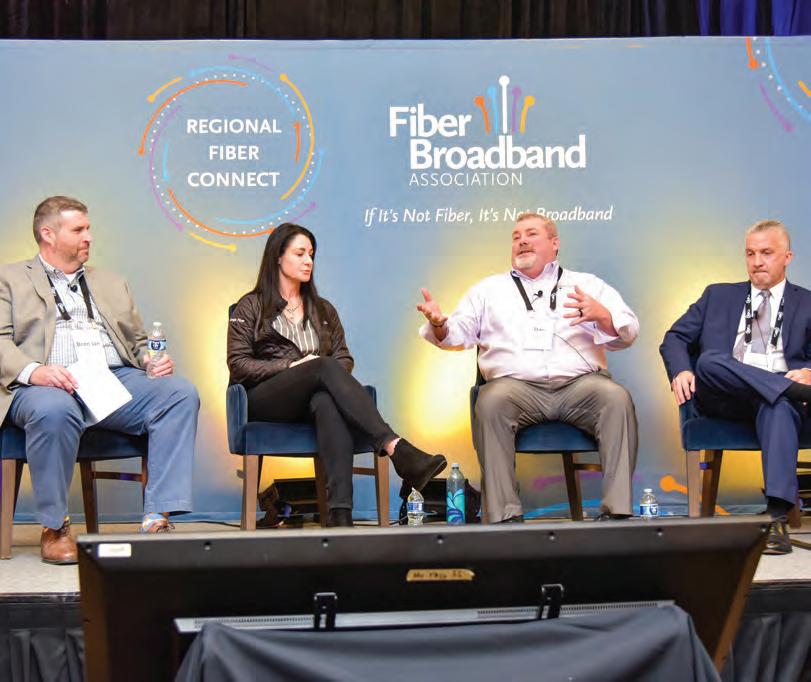
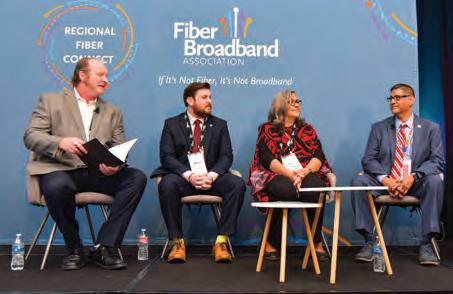
31 Fiber Forward • fiberbroadband.org
An expert panel at the Raleigh Regional Fiber Connect highlights how fiber impacts economics and opportunities in every community. The panel was moderated by Mears Group Inc’s Heather Burnett Gold and featured Google Fiber’s Jess George, Lumos Fiber’s Andrew Stevenson, and Ting Internet’s Amol S. Naik.
North Carolina Governor Roy Cooper welcomes attendees to the Raleigh Regional Fiber Connect event in February
FBA Board Vice Chair and Nex-Tech’s Jimmy Todd, Choctaw Nation’s Robert Griffin, Kickapoo Tribe’s Kay Rhoads, and Muscogee (Creek) Nation’s Micha White explore tribal considerations for fiber broadband at the Oklahoma City Regional Fiber Connect event.
During the Raleigh Regional Fiber Connect event, Lumos Fiber’s Dan Fishback talks about fiber broadband deployment challenges and opportunities. The panel was moderated by Preformed Line Products’ Brendan O’Boyle and also featured Google Fiber’s Lisa Speller-Martone and Brightspeed’s Steven Brewer.
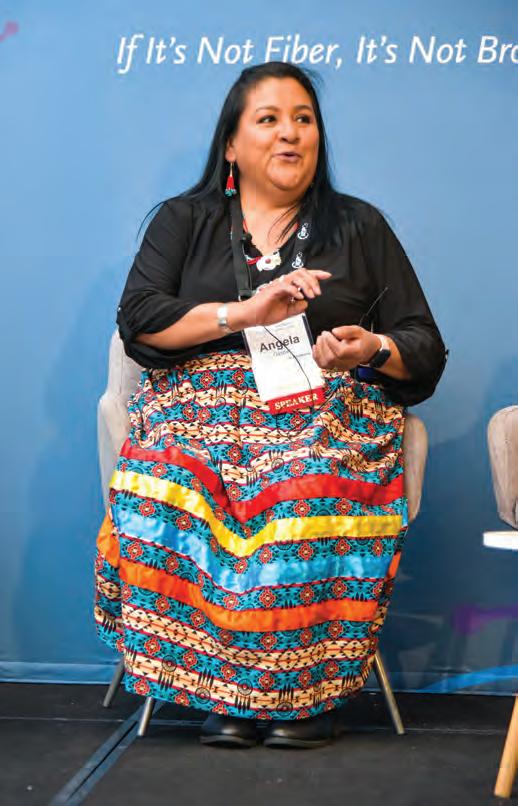
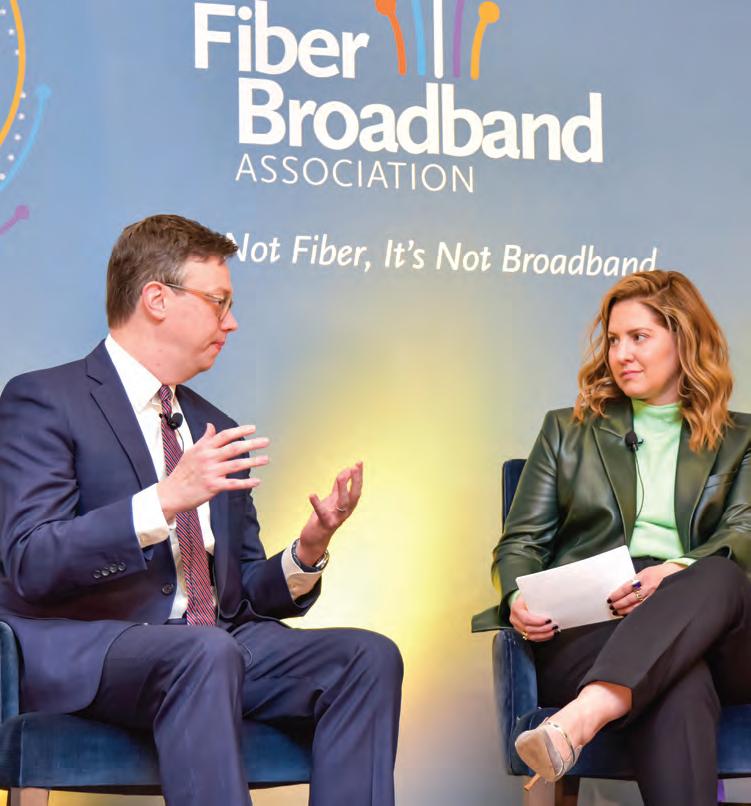
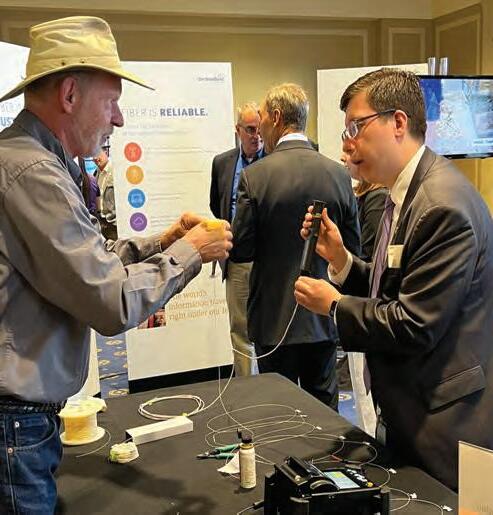

32 Fiber Forward • Q 2 Source
for all photos: FBA.
FBA’s Marissa Mitrovich and NC Department of Information Technology’s Nate Denny hold a fireside chat at FBA’s Raleigh Regional Fiber Connect event in February.
FBA Board Member and epb’s Katie Espeseth discusses fiber monitoring and operational support at the Regional Fiber Connect event in Raleigh. Her fellow panelists included Eastern Shore of Virginia Broadband Authority’s Robert Bridgham, Adva/Adtran’s Abdala Kheireddine, and the panel was moderated by FBA Conference Committee and Lit Communities’ Ron Frye.
Sponsors and attendees gather at FBA’s Fiber Day on the Hill in Washington, D.C. to highlight the capabilities and potential fiber broadband can deliver across the country.
Angela Gasper from Sac and Fox Nation presented a fireside chat at FBA’s Oklahoma City Regional Fiber Connect event about connecting tribal communities.
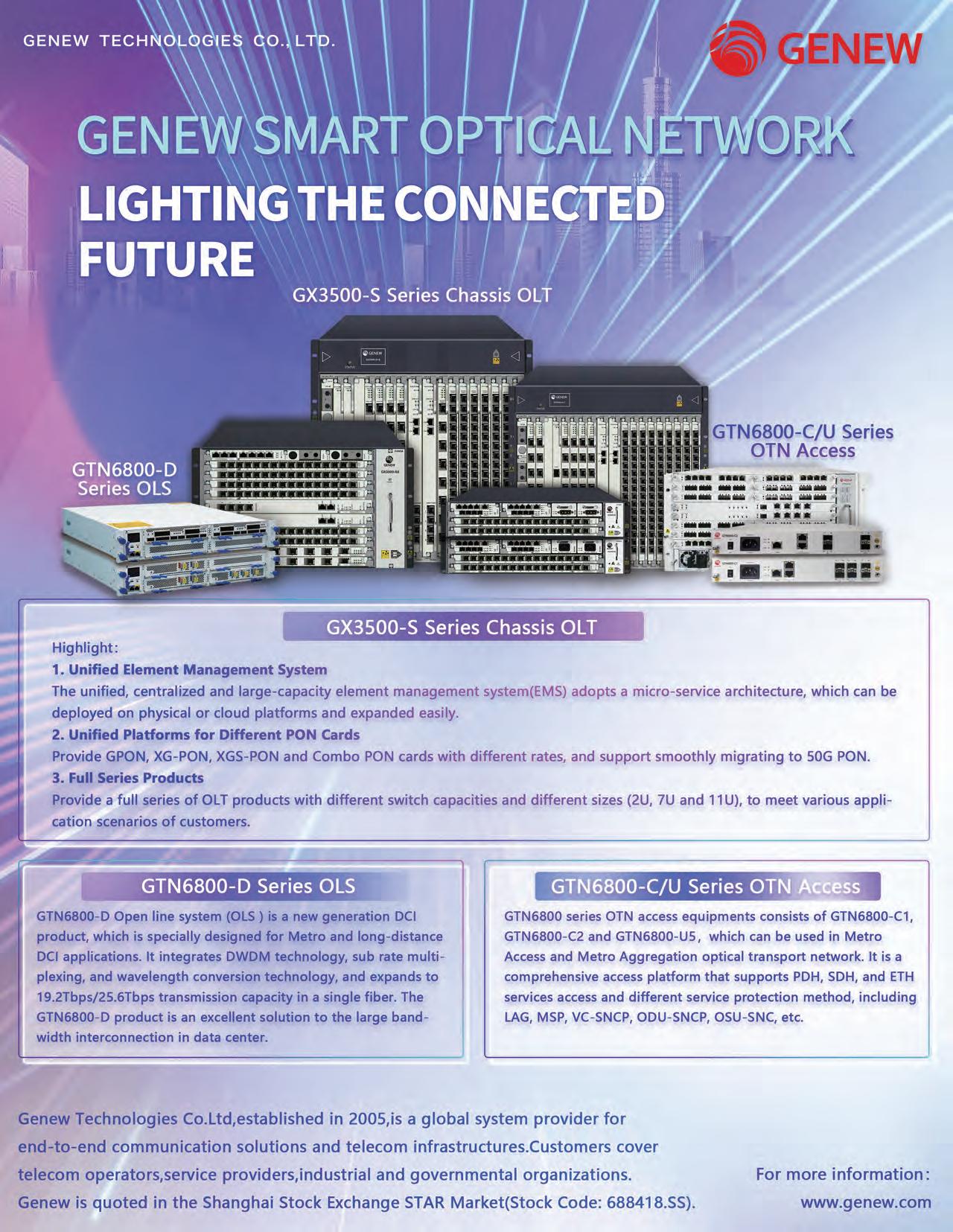
62 SECONDS
THE TIME UNTIL THE NEXT UNDERGROUND UTILITY STRIKE
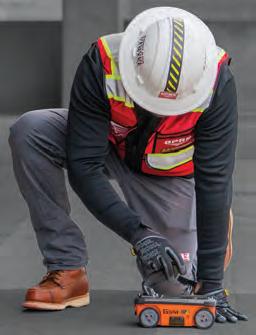
99.8% – GPRS accuracy rate on over 400,000 jobs
You do the math…Then call GPRS
Knowing where your subsurface utilities are before you break ground saves time, money, and even lives. GPRS physically locates all utilities on your site and provides free PDF and .KMZ files with every outdoor utility locate. We secure your data with SiteMap®, our exclusive infrastructure data platform, so you can put the right information into the right hands at exactly the right time.
You will receive a complimentary Personal SiteMap® subscription to access and securely share your data because accurate data makes everyone’s job easier.
UTILITY LOCATING
VIDEO PIPE INSPECTION

LEAK DETECTION
MAPPING MODELING
CONCRETE IMAGING
3D LASER SCANNING
Scan the QR Code to Learn More & Get A Quote

SiteMap®, powered by GPRS helps you capture, layer, and geolocate every piece of your campus or facility - above and below ground - and to securely share that data with those who need it. You control the information flow to put the right information into the right hands at the right time.
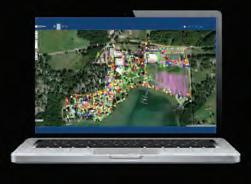
Source: Dall-E/OpenAI
Prepping for Cybersecurity
By Doug Mohney
Cybersecurity is a concern for everyone everywhere, from the operation centers of Fortune 500 companies down to your personal PCs and phones. Who among us has not received a notice in the mail of our personal information being compromised due to a security breach at one of our institutions?
Banks, insurance companies, hospitals and health care organizations, and government agencies have all fallen victim to the efforts of bad actors seeking to sell our data on the dark web or, more chillingly, hold vital systems for ransom. It is the success and growth of attacks that has, sadly, driven awareness and the need for service providers to secure their own networks and offer protective services to their business and consumer customers.
“Cybersecurity is definitely changing,” said Tony Mason, Segments and Countries Security Lead, Cisco. “I’ve been in the industry for 20 years and it’s always going to be a different job every day. But when you boil down the threat, it really comes down to three things for a provider. First, they have to protect their business. Second, they have to protect their users or help protect their users. Third, and this is one that gets forgotten the most, is they need strategies to help protect their businesses from their users.”
Cisco has thousands of security customers. Mason’s direct team works with 650 customers across the U.S., including data centers, service providers, media companies, and technology startups. One trend Mason sees with consumer awareness on the rise due to media coverage
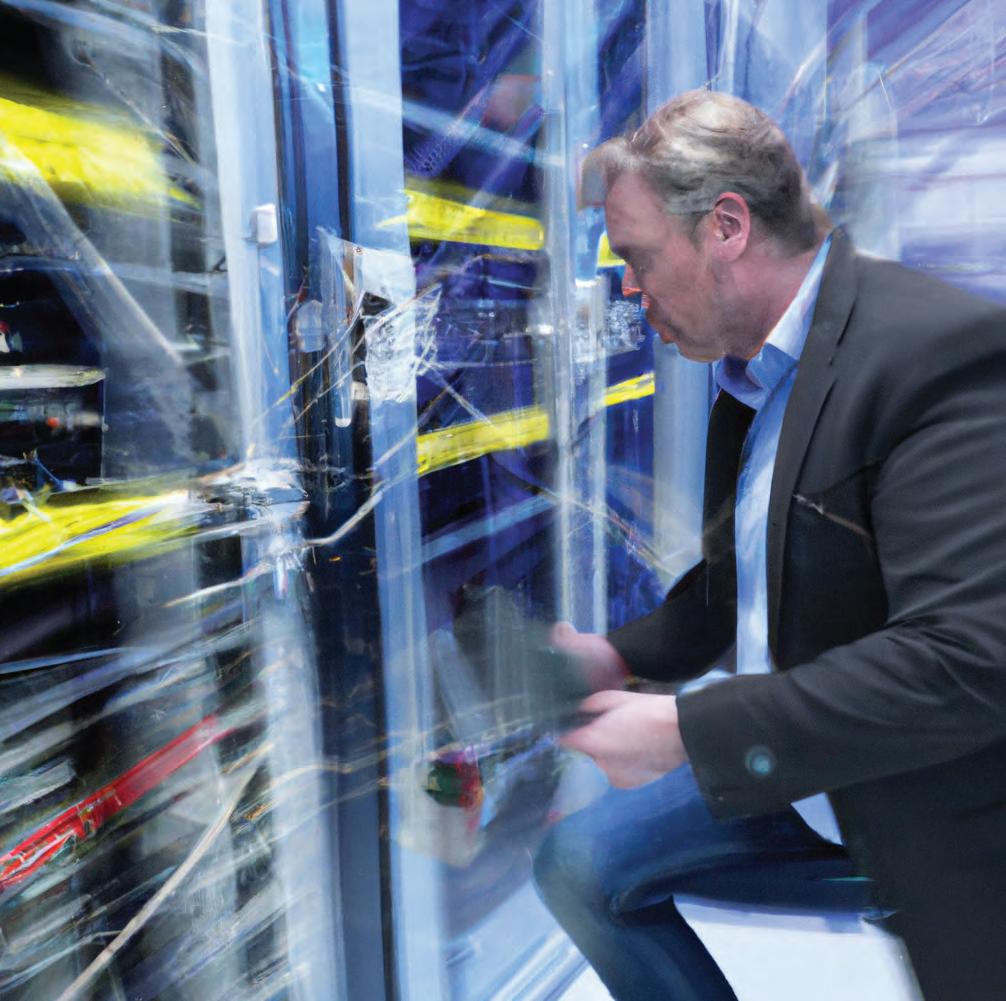
35 Fiber Forward • fiberbroadband.org
of cyberattacks is the need for providers to provide some basic security services for customers as well as being able to defend their own networks against intrusions and denial of service attacks.
“In the past, service providers felt like it was just about the transport,” Mason said “They still need to build fast and reliable networks. However, because of increasing security threats, providers need to protect their business. Their inbound and outbound circuits and production networks need protection against security threats whether these come directly from adversaries or through their customers or consumers. Another reason driving increased service provider awareness around security is the 21st century need for insurance against cyberattacks.
“Cyber insurance helps protect companies from some of the negative effects of a cybersecurity incident,” said John Streff, IT Security Specialist at Vantage Point. “If they have to spend the money to hire an incident response provider or forensics firm to conduct an investigation, it may help pay for that.”
Vantage Point, a premier engineering and consulting firm serving the broadband and financial industries, has been receiving an increasing number of requests to work with service providers to develop and implement cybersecurity programs in order to get or renew their insurance policies.
“For some of the grant funding that’s been coming down, you’re required to have a cybersecurity program and plan in place,” stated Streff. “We put together cybersecurity playbooks that run through a list of 25 to 30 different cybersecurity services or assessments. Our goal is to get them to be self-sufficient in a three-year period.”
Vantage Point’s approach is to emphasize the basics and build from there. “Good password hygiene and secure network topology,” Streff said. “Anti-virus and internal/external penetration tests. Watch out for social engineering, conduct proper staff training, a lot of those kinds of things.”
Penetration testing – finding ways and means where attackers can gain electronic and physical access to the network and hardware – can be a wake-up call for many organizations. “We’ll conduct tests from the outside of their network, simulating somebody who’s on the other side of the world trying to break into their externally facing systems, check for vulnerabilities in those,” Streff said. “We’ll also conduct internal penetration assessments, where we’re trying to test their security from the point of view of somebody already on the network, which could be someone who has already hacked into the organization or a malicious insider potentially, who’s decided to turn against their company.”

Social engineering threats are the most common being directed against organizations today, including phishing
emails that entice someone within the organization to click on a link that installs malware or leads them to a malicious website. Other basics such as making sure that firewalls and other security methods are properly configured and up to date can be revealed through penetration testing.
“There are so many basic things that people should do that would take care of the vast majority of threats,” Streff said. “I think part of the reason we need that back-tobasics approach is because technology is becoming very complex. Both the attacks and the defense these days, like antivirus and firewalls, are sophisticated, so it’s going to
36 Fiber Forward • Q 2
Source: Dall-E/OpenAI
catch a lot of the really intricate attacks, that’s why attackers are choosing to go with the simpler human methods.”
In other words, it’s easier to use techniques like phishing or the simply expedient of dropping a USB drive labeled “Bonuses” and loaded with malware in the parking lot with the typical result of it getting picked up, taken into the office, and plugged into a network computer where it can go to work for an attacker.
Sometimes attackers are simply let in the front door and left unsupervised, as Vantage Point finds out first-hand for organizations willing to go the extra mile in testing.

Vantage Point employees will role play as attackers trying to gain physical access to facilities and equipment with the consent and permission of senior management, impersonating utility workers or other technicians.
“If it’s a gas leak pretext, we’ll dress up as a service technician for the local energy company, have a hard hat, fake ID, maybe a fake work order, a gas meter,” said Streff. “We’ll tell them we need to search the building. We’ll see if they call the utility before letting us in, using the utility’s phone number and not calling the number we give them staffed with our person. If we get access, we’ll see if they follow us around or simply just wander unattended. If we are unattended, can we get access to any computers and network equipment?”
“Question everything and verify the authenticity of every request is the most important thing people could do to combat social engineering. We frequently are allowed to do things we shouldn’t be able to and will frequently get stopped too,” he said. “Usually, people will go get the manager and ask for permission to let us in and turns out the manager is our point of contact. At that point, they’ve passed the assessment because they escalated it as they should, rather than just complying blindly with whatever we said.”
Once inside a building and unsupervised, Vantage Point personnel may pick locks to get access, but they’ve found that even that may not be necessary, with some people leaving facility doors unlocked and windows open where network gear and computers are. “All it takes is one compromised computer and then you can sometimes spread to the whole network,” Streff said. “Even a computer out in the warehouse needs to be properly secured.”
Streff also mentioned the need for proper internal controls to mitigate the potential for a disgruntled employee taking out their frustrations on the business. “All the service providers should be monitoring their staff, especially higher privileged staff like their administrators, to make sure that all their actions are accounted for, are audited or reviewed,” he said. “There should be dual controls implemented, so no one person has the keys to the kingdom. If you have only one guy who can control the firewall, nobody can keep an eye on what he’s doing. You should have multiple people who have administrative access and who are competent in administering said device, but it can be difficult with smaller entities.”
Service provider employees should also be careful what they post online because today’s Instagram or YouTube post is fodder for the next phishing expedition. “The more somebody knows about you, the more they can hurt you,” Streff said. “We see that on social media, people who share every detail of their lives and then an attacker can use that to create a pretext for social engineering. All the deep fake technology we’re seeing these days, if somebody has all kinds of videos and audio recordings of me, then they can create a deep fake.”
(cont. on page 57)
37 Fiber Forward • fiberbroadband.org
California’s 10,000 Mile Middle-Mile Network
Most states are creating or expanding their existing middle mile infrastructure to support the tremendous amount of last mile connectivity being driven by the $42.45 billion in BEAD funding. But California is building the largest one of all. Its Middle Mile Broadband Initiative (MMBI) is a massive open access network project that will run between 8,000 to 10,000 miles of fiber, connecting unserved and underserved urban, rural, and tribal regions in the state. A combination of $3.8 billion in state and federal funds has been committed to the project so far.
“Both the California legislature and the Governor believe that there is no equity without digital equity in the 21st century,” said Liana Bailey-Crimmins, State CIO and Director, California Department of Technology. “Our daily lives are surrounded by technology. We see that internet is a part of our daily lives for education, health care, jobs, interacting with your communities. One in five Californians do not have access to affordable high-speed internet. When you look at tribal nations within California, 28% of the tribal lands do not have modern access to internet.”
Once completed by the end of 2026, the middle-mile network is expected to be the backbone for service providers reaching more than 675,000 unserved households throughout the state. Construction has already begun on several segments of the network as a part of ongoing transportation projects while the MMBI planning
By Doug Mohney
team is working on optimizing the proper mix of leasing, building, and buying fiber. The state plans to lease more than 4,000 miles, build between 3,000 and 3,800 miles, and buy another 500 miles of fiber routes.
To make the December 2026 completion date and get the most value for every dollar spent, Bailey-Crimmins emphasized the state is tossing out the traditional government procurement mindset, embracing teaming arrangements with private companies and being open to new ideas brought in by others so long as they get the job done.
“California does something very unique,” said BaileyCrimmins. “We go out to the telecommunication industry and outline the problems we’re trying to solve through an RFI Squared, which is a Request For Innovative Ideas. We open it up to the community of providers, asking how they would solve these issues. And that is how we are establishing the bids. We don’t become really prescriptive. It’s so very different than the usual way of doing business, where there might be 10 tasks that we believe are the best tasks for a project and you only can bid on these 10 tasks.”
Alternatives to standalone California Transportation (Caltrans) construction arrangements building fiber alongside the highway system include joint network builds that share construction costs with partners so that infrastructure for both systems is installed at the same
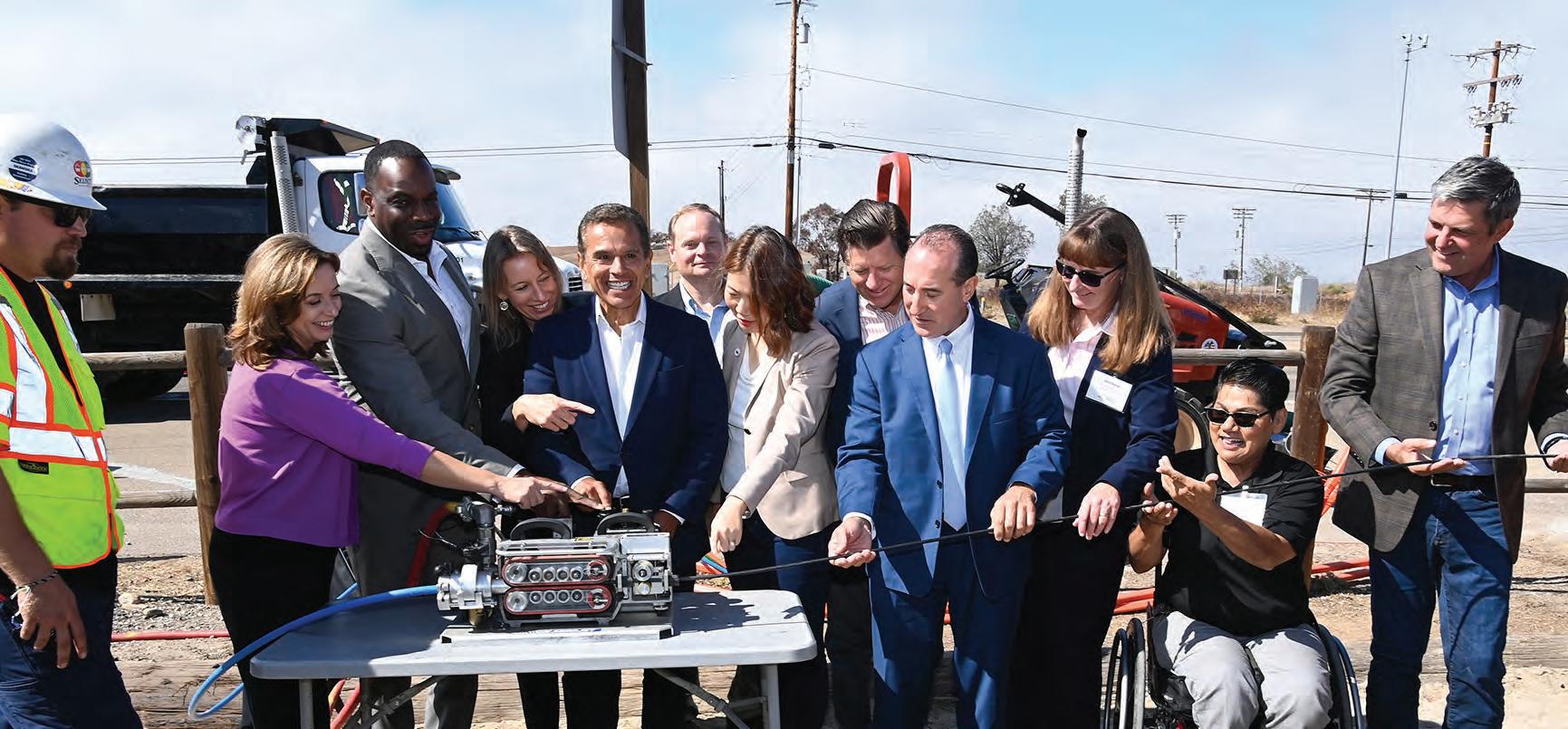
38 Fiber Forward • Q 2
California officials put first fiber in place for the state’s 10,000 mile middle mile network. Source: California Department of Technology.
time, reducing costs for both the state and its teaming partner. The state is buying some existing fiber outright at a price that is less than it would cost the state to build it themselves. In addition, long-term leases with a typical length of around 20 years for use of existing fiber infrastructure, such as conduit or fiber already in the ground, are generally expected to provide access to communities for last-mile service faster than a standalone construction project.


To facilitate completion and continue to be forward-leaning, MMBI signed purchase agreements for conduit and fiber a year ago so the project could stay on schedule and ahead of potential supply chain issues, with 288 strand cables as the standard for deployment. As construction starts in earnest this year, electronics are being brought in as needed. Working alongside Caltrans highway work enables MMBI to build with minimal disruption to communities.
Permitting is another critical area where California has taken legislative action and is finessing the process in working with other agencies. “Because of the timeframe, this is not a linear project, all these things are going and being done simultaneously,” said Bailey-Crimmins. “With Caltrans, we’ve looked at our current highway projects that are underway and have already been permitted. We ask if we can just go ahead and add fiber to that particular agreement, we call
them ‘Dig Smart’ type of projects.” Along with working with Caltrans to accelerate construction, the California Senate passed legislation for improved permitting processes under the California Environmental Quality Act (CEQA), reducing the time for approvals from around 30 months to 17 months.
The MMBI infrastructure will be managed and operated by GOLDENSTATENET, a subsidiary of an existing third party already running the state’s educational network. “At the end of the day, we will own the state network and ensure that there’s a revenue model to be able to make sure that if something is cut, that if there’s some type of issue, that those households and those last mile providers continue to have the service that they’re going to be relying on when it’s completely done,” said Bailey-Crimmins.


Bailey-Crimmins believes California’s creative approach to MMBI with a combination of state-only construction, joint projects with other parties, and long-term leases will enable the project to be finished on time. “The goal is to have everything under contract, everything’s signed by the end of this year, which is actually a year ahead of schedule,” said Bailey-Crimmins “We were expected to have everything under contract by December 2024, but we’re actually planning on having it under contract by December 2023, if not sooner, with the final goal of having everything developed and operational by December 2026.”

39 Fiber Forward • fiberbroadband.org
Broadband Engineering Solutions Client-Focused Technology-Driven Connecting Next-Gen Networks Designing and implementing advanced broadband solutions using state-of-the-art fiber-optic technology, delivering high-speed and dependable connectivity to meet our diverse customers’ needs. engr.readitech.com
Cutting-Edge
Making the Middle Mile Network
By Doug Mohney
Middle-mile networks are a crucial tool to extend connectivity into unserved areas and a path for service providers to collaborate in purchasing connectivity and build resilience into their networks. A number of states are working with third parties to build and operate middle-mile networks in order to increase access for their unserved communities.
For instance, Alabama and Arkansas have independent organizations building middle-mile networks. The State of Alabama held a competitive process for its middlemile project, awarding $82.45 million to a consortium of eight rural electric cooperatives to build the Fiber Utility Network (yes, it’s FUN). Over three years, FUN will build 500 miles of fiber to bring together the 3,000 miles of existing fiber operated by the eight members.
“We saw the need to connect to each other,” said Tom Stackhouse, current President of FUN and President & CEO of Central Alabama Electric Cooperative. “It was the opportunity to help each other out and as well, to be able to go to market and purchase internet services at a better price than what we could do individually. I have people say, ‘What’s middle mile?’ I think of it in electrical terms, it just gets us closer to where a last-mile provider can get to folks.”
Stackhouse and the rest of the current FUN board are in the process of finding a CEO and putting in full-time staff to build and operate the network, with construction expected to start next year. The middle-mile network will extend fiber broadband into most Alabama counties, providing an affordable access network for third parties to come in and build last-mile networks.
“It’s not a big moneymaker,” Stackhouse said. “A lot of where [FUN] middle mile is going to go, somebody’s got to provide that last mile. The big moneymaker is at the front-end of the internet and the delivery. All we’re trying to do is to make it easier for the state to grow out broadband service across the state for more people.”
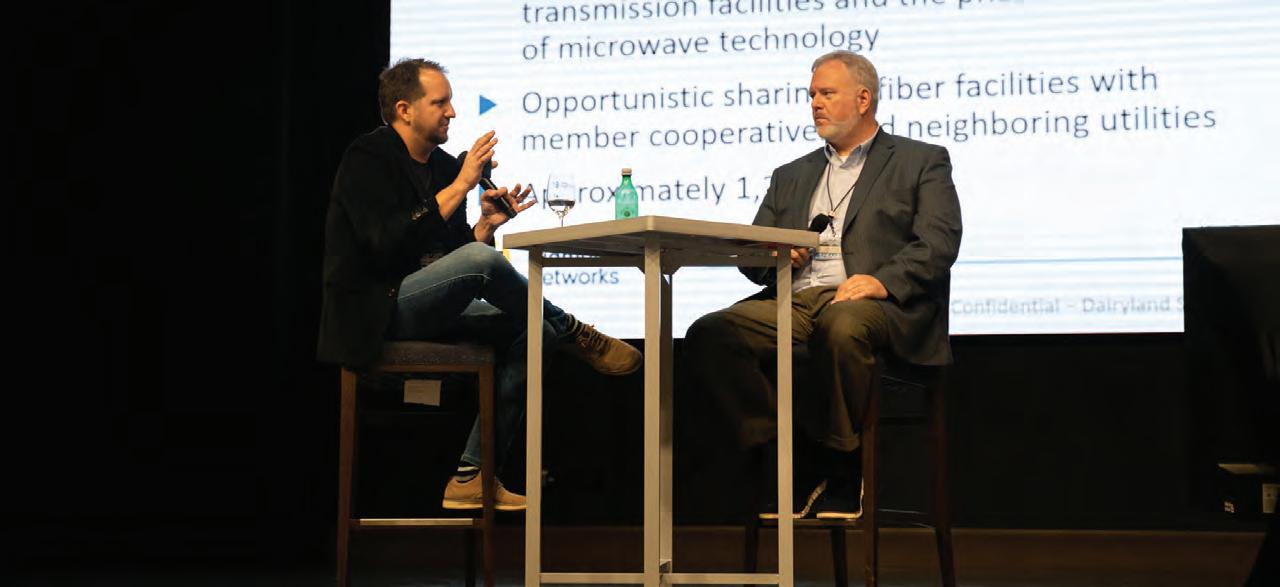
Over recent years, tornados and other extreme weather have challenged Alabama coops, taking down miles of utility poles and leaving both fiber and power lines down in their paths. Central Alabama Electric Cooperative and the other co-ops involved are always looking to improve resilience in their respective networks, with FUN providing additional routing to another feed in case of a primary network connection break.
“As far as the last mile, we have a very robust system that we’ve built,” Stackhouse said. “We’ve got additional layers so that when we can have four or five outages and have the redundancy to get most everything back on. In a lot of places, the fiber didn’t break, it’s still there laying on the ground still running. Where it did break, we’ve got the redundancy to back it up. Downed power lines are harder to get back up and running.”
Northwest of Alabama, the Diamond State network in Arkansas is further along in the construction of its statewide middle-mile fiber system. When completed, it will link together cooperatives covering over two-thirds of the landmass of Arkansas and more than half the population. The organization plans to build 45 major interconnection points across the state with more than 25 placed in “broadband desert” areas that are not already being served.
40 Fiber Forward • Q 2
Doug Maglothin, CEO Diamond State Networks (Left) and Scott Hendrix, CEO and General Counsel, Tombigbee Electric Power Association discuss benefits of Arkansaw’s middle mile network. Source: Ozarks Electric Cooperative.
“In early 2020, there was a meeting in Jonesboro, Arkansas, where nine electric cooperatives all involved in broadband projects came together,” said Doug Maglothin, CEO, Diamond State Networks. “Three years later, we’re still unearthing new ideas and new opportunities about what’s possible through this federated network.”
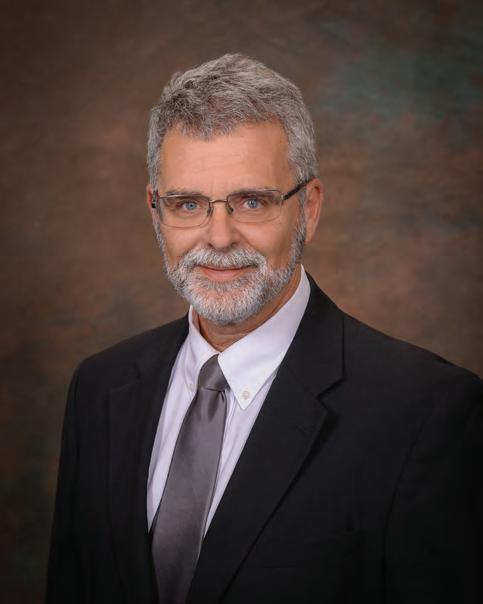
Today, Diamond State has 13 participating Arkansas co-ops that have or are putting in $1.8 billion into fiber broadband infrastructure across the state. Maglothin said the organization is more than halfway done with its planned deployments and hopes to wrap up the rest of the network by the third quarter of 2024, with supply chain issues slowing the pace of construction. Completion of the network is part of a larger effort to improve the state’s infrastructure.
“If you look at any research group that is measuring the least connected states, you’re going to find Arkansas either at the bottom or very very close to the bottom on anybody’s ranking list,” Maglothin said. “Broadband Now has us at 50 or 51 – counting DC – so we put the flag in the ground and made part of our mission statement that we wanted to see Arkansas become the most significantly connected state. In 2020, that sounded pretty audacious, if not maybe even a little bit ridiculous but we thought we could get there.”
“A few years later, the amount of demand that we’ve seen from all manner of constituent groups around the state, the amount of support that we’re now seeing through federally funding programs, we feel like the state of Arkansas is waking up to what the power of middle mile can bring to the state. We absolutely feel like our vision of becoming the most significantly connected state is now well within our grasp, and that we’ll probably see the realization of that vision certainly within the next several years.”
Diamond State has set forth three basic components in its mission of raising Arkansas to the top of the broadband rankings. First, it is building best-in-class connectivity, enabling symmetrical 10 Gbps services available to consumers that will be backed by high capacity and highly-redundant networks for sustainability. It also plans to attract content providers to Arkansas, enabling Diamond State members to reduce costs and increase efficient use of bandwidth.
Long-term cost control is the second mission component. Delivering high volume, Tier 1 traffic aggregation means low-cost services while bringing in content providers also means lower cost and a much greater quality of experience through faster, more responsive services. Maglothin hopes to eliminate 90% or more of upstream access costs and pass along the savings to participants.
The first two mission components lead to the third, and perhaps the most important one, affordability for all. Diamond State will continually pass savings along to consumers. The organization plans to create a matrix of income challenge and inclusion programs to make sure all Arkansans can get access regardless of status. Diamond State is also disrupting current models of education and healthcare connectivity, so residents can live practically anywhere in Arkansas and have access to those vital services without limits.
To date, Diamond State has spent around $55 million to build its statewide network and expects to come closer to $200 million when it is complete. Some of the expansion includes out-of-state connections to further lower network costs. “The long run play here is working with our cooperative friends to create a regional plan, even a national plan that we feel will be highly impactful on the costs for broadband around the country,” said Maglothin. “If you’re going to buy broadband optimally in middle America, you need to be in Dallas, Atlanta, and/ or Chicago, either or all three because you need to be there for your highest number of interconnections and your lowest cost of upstream service.”
41 Fiber Forward • fiberbroadband.org
Tom Stackhouse, CEO of Central Alabama Electric Cooperative is overseeing the startup of Alabama’s middle mile network organization, as President of the Fiber Utility Network (FUN). Source: Central Alabama Electric Cooperative.
FIBER CONNECT 2023 PREVIEW
By Evann Freeman, Director Government Relations, EPB, FBA Conference Committee Chair
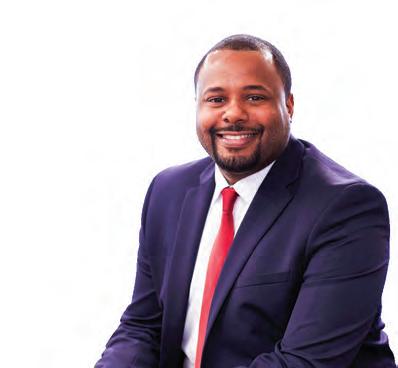

When we first started planning Fiber Connect 2023, we had one goal in mind – to ensure that the possibilities created by fiber broadband were front and center. Over the years, we’ve discussed the economic impact fiber broadband can have on communities including the ability to raise local GDP, increase home prices, and impact local services. So, this year we wanted to shine a light on how markets have leveraged fiber broadband to deliver innovation and create disruption. While everyone knows the role the network played in Netflix’s ability to disrupt the entertainment industry, this is just the tip of the proverbial iceberg.
Fiber Connect 2023 is all about disruption and the role fiber broadband plays in enabling markets, companies, and communities to evolve, create, and alter market dynamics in new and exciting ways. This year, we’ve added six Operator Light Talks where leading network operators will detail how their networks are allowing customers to shift market paradigms, create opportunity, and underpin customer experience. During The State Broadband Summit at Fiber Connect 2023, attendees will also be able to hear firsthand from broadband officers, state legislators, and county commissioners about their plans to leverage NTIA BEAD funds to close the digital divide.
Over the course of four days, the Fiber Broadband Association (FBA) conference committee has created a wealth of new content, programming choices, and topics of discussion designed to inform, educate, motivate, and inspire. We have invited key partners back, new partners in, and expanded the conversations to include new areas not addressed yet. Let’s start at the beginning with the PreConference Workshops on Sunday, August 20, 2023.
Sunday Funday - Pre-Conference Workshops
Fiber Connect 2023 has five Pre-Conference Workshops planned, including the Fiber Broadband Toolkit. This is the ideal place for operators considering fiber deployments for the first time to hear best practices, tools and tricks learned from FBA members, and recommendations on how to leverage opportunities and overcome any challenges that might arise.
Other Pre-Conference Workshops include: The Ecology of Fiber Broadband: Forging a Sustainable Future; Tower Talks: Middle Mile and Fiber – Now We’re Talking; Community Broadband: Muni, Co-Op, Utility Broadband Flex Their Reach; and a workshop curated by FBA and the National Association of Counties (NACo) titled Local Look: How Communities Evaluate Fiber Builds.
The Main Event
The main conference kicks off bright and early on Monday, August 21, with remarks from FBA President and CEO Gary Bolton on the State of the Association and Industry. We’ve got a bevy of industry experts and luminaries so bright you’ll need to wear shades. With over 225 speakers presenting as part of the general sessions, breakout sessions, the newly created Technology Deep Dives, and The State Broadband Summit at Fiber Connect 2023, there will be something for everyone.
Fiber Connect 2023 has several new programming elements, including six the Operator Light Talks mentioned earlier. During these 18-minute, Ted Talk-style keynotes, executives from AT&T, Frontier Communications, Google Fiber, Lumos Fiber, EPB, and Ting Internet will share how their customers are leveraging fiber networks to create market disruption,
42 Fiber Forward • Q 2
enabling companies and people to go further than ever before. We will hear about advances in Quantum computing & communications, digital equity, 5G, community engagement, and how fiber broadband is providing the ultimate customer experience possible as waves of new applications and services become available across the home.

Conference attendees will also hear from the U.S. Department of Transportation’s Assistant Secretary for Transportation Policy Christopher Coes about the role fiber will play in supporting the emergence of autonomous vehicles and support for electric cars. We will also cover topics such as Fiber Broadband Triple Play, Fiber ROI - Making Fiber a Win/ Win/Win, In-Home Experience, and gather the leaders of key industry associations to discuss workforce development.
On Monday afternoon, FBA is hosting The C-Suite Forum, a unique opportunity for industry leaders to meet, network, share ideas, and discuss the opportunities and challenges each face as we collectively work to close the digital equity gap. Speakers will include leading regulatory and policy officials, state broadband officers, and other experts that can help member companies navigate federal funding options. FBA is in the unique position, based on its over 500 members, to include the top executives from the companies that will leverage federal funding programs like NTIA’s BEAD program to take their fiber networks forward.
Monday and Tuesday afternoons also include a newly created program in partnership with The Broadband Forum – Technology Deep Dives. These are 90-minute panels where we’ll discuss the technical considerations, opportunities, and challenges as the industry looks to push fiber further. At Fiber Connect 2023, leading engineers, innovators, and technologists will dive deep into the Future of Fiber Access Networks; The Connected User & Services; ODN Design and Implementation; and Middle Mile & Service Delivery. This new program is ideal for any operational experts, design engineers, and other technology staff that want to learn more about where fiber goes next.
A total of 42 breakout sessions, which focus on market drivers and opportunities, will be divided into seven tracks on Monday and Tuesday. Some tracks offer programming on both days, some just on one so refer to the Fiber Connect 2023 conference website for specific sessions, topics, and speakers. Returning topics include popular tracks focused on innovation, network perspectives, case studies, and deployment challenges. New content this year includes tracks focused on marketing tactics, fiber financials, in-home experience, 5G and fiber, supply chain & manufacturing, and a track curated by one of our media partners, Cablefax and ACA Connects, designed to discuss the role of fiber broadband in cable operators’ future plans.
On Wednesday, August 23, FBA is hosting The State Broadband Summit at Fiber Connect 2023. Developed and
curated by the Broadband Access Initiative team at The Pew Charitable Trusts, the one-day summit will tackle the critical issues of the day as states start to submit their five-year broadband roll out plans. FBA is bringing together all parts of the fiber broadband ecosystem to discuss the path forward –the who, what, when, and how our industry will close the Digital Equity Gap for every community, household, and person.
Of course, Fiber Connect 2023 is about much more than in-depth programming, inspiring debates, and fresh perspectives. It’s also about the opportunity to learn about new products and technologies, see innovative Proof of Concept Demonstrations, network with old friends, and meet new acquaintances. All this and more can be found on the Expo Hall floor where over 230+ exhibitors will be showing the products and services available as part of the fiber broadband ecosystem. The Expo Hall Theater and the brand new 5 O’Clock Somewhere Bar is where FBA is hosting several Meet-and-Greets including the DE&I and Women in Fiber Meetups. For those that want to get together with like-minded folks outside of Expo Hours, the First Time Attendees and Fiber Under 40 group Fiber Meetup is happening at Wreckers Sports Bar on Sunday evening.
Finally, Fiber Connect 2023 will also include the FBA OpTIC Path™ Train the Trainer program. This program is designed to help seasoned optical technicians develop the skills needed to train the next generation of the optical workforce. The schedule for the Train the Trainer sessions is available on the Fiber Connect 2023 website.
A key tip for those interested in attending Fiber Connect 2023—you’ll need to register first before you can book a room at the Gaylord Palms Resort. Registration links are available on the conference website. We look forward to seeing you in Orlando!
43 Fiber Forward • fiberbroadband.org
More information on the Fiber Connect 2023 conference is available in a series of YouTube videos hosted by Program Chair Rich Williams and FBA Board Chair Joseph “JJ” Jones. Source: Fiber Broadband Association.
Small town, big thinking
Broadband for the future now
Connect your community with technologies that support tomorrow’s needs today. Our broadband access leadership in the U.S. began with the birth of broadband, extended into the fiber era with GPON, and continues today with XGS and the only 25G PON solution on the market.
Wherever you are in your fiber broadband journey, Nokia can help guide your business towards a successful future. www.nokia.com/networks/rural-broadband
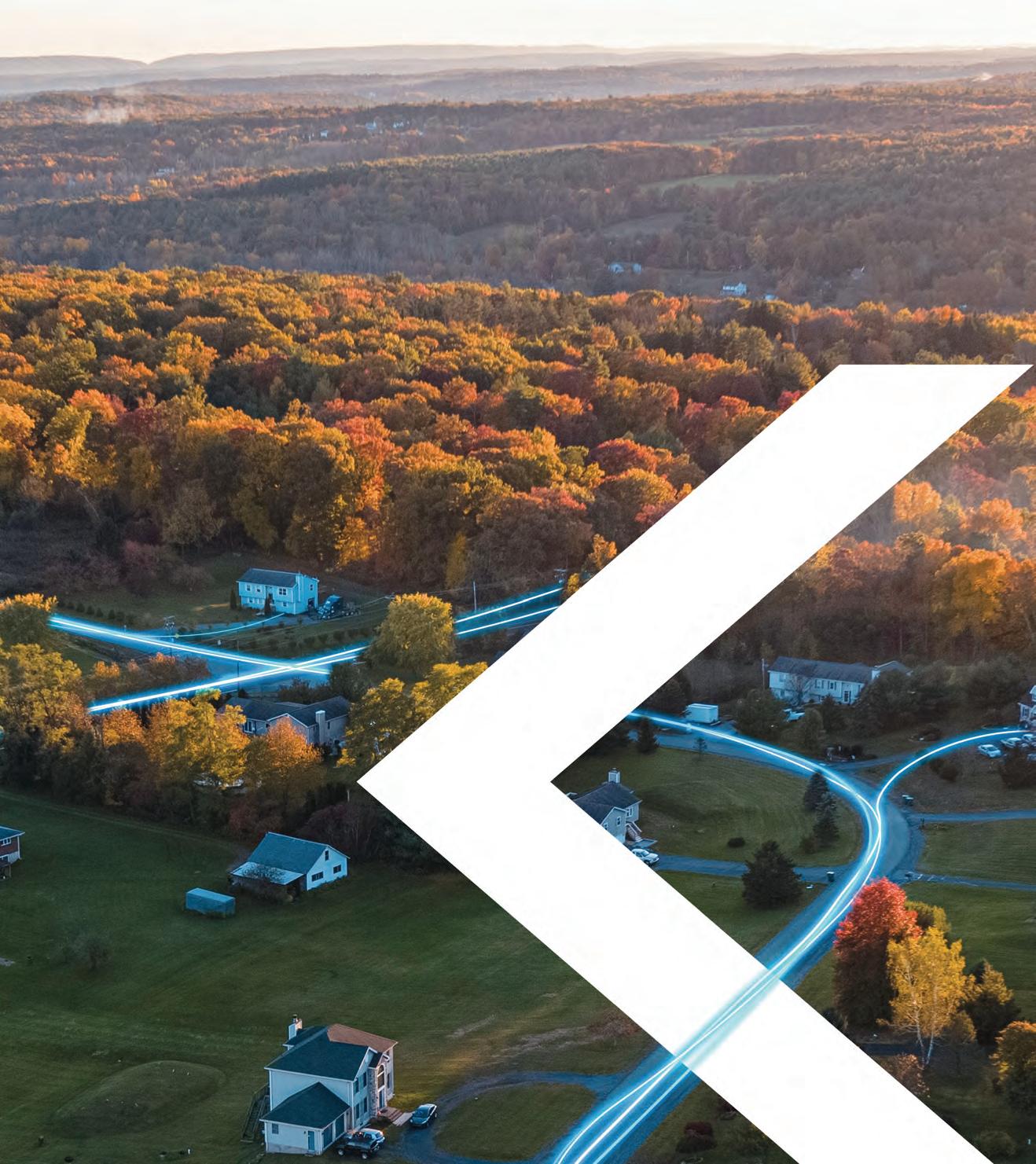
Microtrenching
Takes a Pole Position
By Doug Mohney
Deploying fiber faster is at the heart of every new build. Faster deployments mean lower project costs and unserved residences transformed into the latest digital households. Infrastructure and service providers including Crown Castle, Dycom, Frontier, Google Fiber, S&N Communications, and Ting all use microtrenching as a deployment method for rapidly building networks, according to a recent Fiber Broadband Association white paper created by the Deployment Specialists Committee, “Microtrenching Accelerates Fiber.”
“The microtrenching white paper is important because it’s a technology that is used a lot, but is still kind of villainized,” said Brendan O’Boyle, Chair of FBA’s Deployment Specialists Committee. “We wanted to reset that table. “
There’s a lot of misrepresentation about microtrenching, according to O’Boyle, with a lot of articles presenting a specific perspective, depending on what operator they’re talking about, what specific part of the country they’re in, or what angle they wish to present. “There’s a lot of information that you can find on microtrenching that basically amounts to opinion,” said O’Boyle. “I couldn’t find a paper that tried to approach microtrenching in the way that the Fiber Broadband Association did, which was its benefits to broadband deployment and what it brought to
the table for limitation of underground utility damages, cost savings, and operational enhancements that can come by way of the use of the technology.”
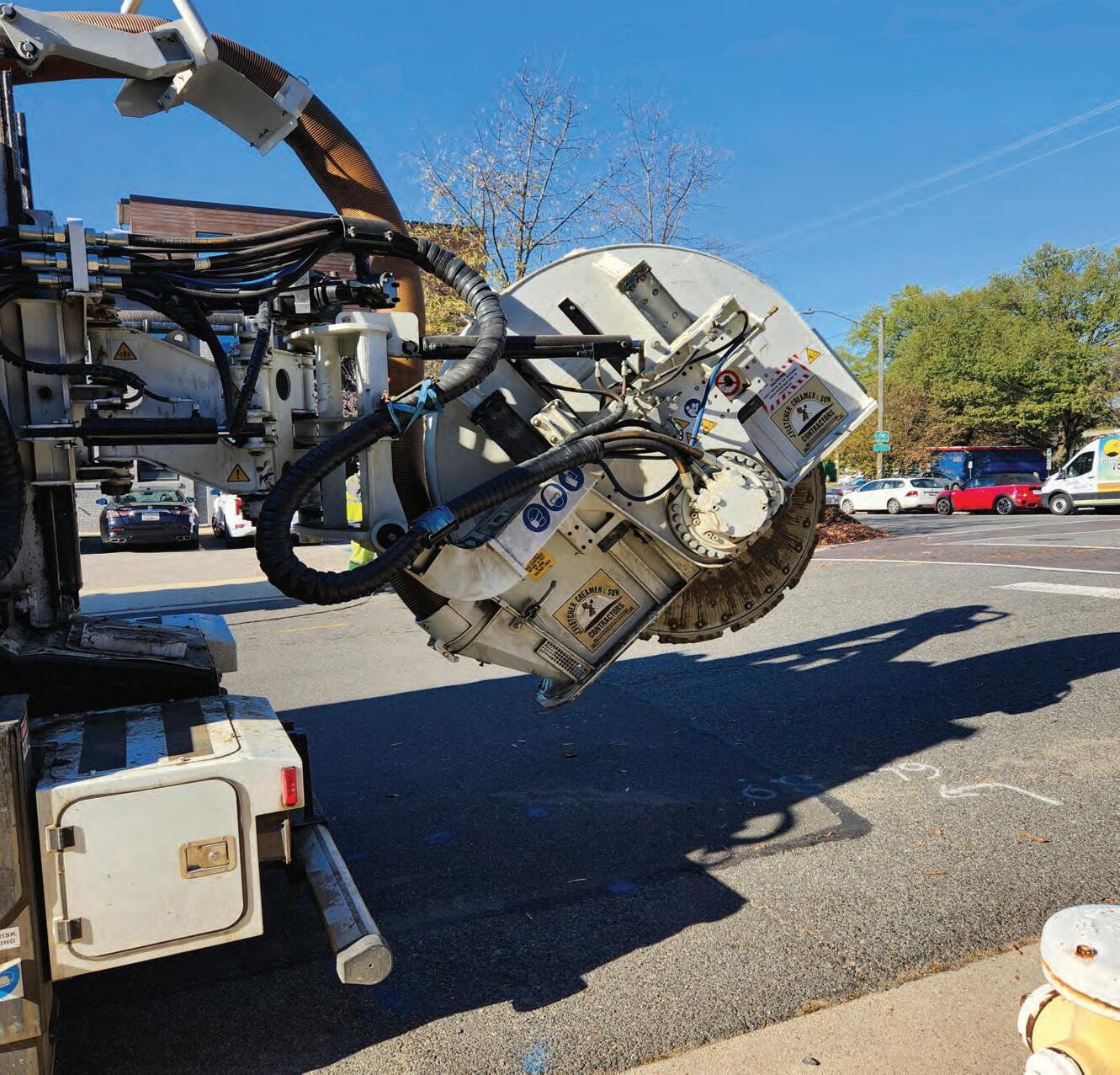
O’Boyle doesn’t expect everyone to think microtrenching is a solution for all situations. “We wanted to present microtrenching to the court of public opinion in a way that had data behind it, driving the case for micro trenching, good, bad, or otherwise. We certainly included in the paper the adverse aspects that are valid, concerns people bring to the table. However, we wanted to try and reset the microtrenching conversation because there have been a lot of enhancements over the last two decades, including the equipment that’s offered today versus the initial generation, but also the backfill materials and the processes with which it is installed.”
Certainly, the need for deploying fiber to meet the needs of unserved and underserved homes and businesses is clear. Over the past five years, U.S. fixed broadband upload and download speeds have increased at a compound annual growth rate of 27% and 28%, respectively, according to research compiled by the FBA Technology Committee. If these growth rates continue over the next decade, average fixed broadband speeds will reach 1,500 Mbps and 599 Mbps by 2030.
45 Fiber Forward • fiberbroadband.org
Microtrenching equipment has advanced significantly in the past two decades, making the task much faster. Source: Doug Mohney.






WITH LIGHTNING SPEED BROADBAND PRODUCTS linkedin/HFCLhfcl.com 4
8 GLOBAL OFFICES MARKET PRESENCE
60 COUNTRIES 1700+ EMPLOYEES OPTICAL FIBER | OPTICAL FIBER CABLES | INTERCONNECT SOLUTIONS CONNECTING HYDERABAD GOA CHENNAI HOSUR INDIA DUBAI POLAND GERMANY FRANCE UK NETHERLANDS USA CANADA
STATE-OF-THE-ART MANUFACTURING FACILITIES
IN
Rapid deployment of fiber through microtrenching and other innovative fiber deployment techniques could save considerable money. Accenture estimates that accelerating the deployment of national communications infrastructure by one year will result in a $100 billion impact over the next three years, according to a case study it conducted on the economic impact of 5G on the economy.
Defining and Refining
The FBA white paper defines what microtrenching is and compares it to other means of deployment. With over two decades of refinement and innovation, there are new methods coming along that may be considered microtrenching but aren’t. “Microtrenching is one aspect of a small trench ecosystem,” O’Boyle explained. “There’s microtrenching, there’s nanotrenching. Now there are products on the market that you essentially paint fiber on the road. Microtrenching fits into an 18-inch-deep by about two inches wide trench. It’s not 24 to 36 inches deep, it’s not two inches deep, it has a specific criteria to it.”
Enhancements made to microtrenching are the backflow and fill materials used specifically to the roadway they are installed on. “We’ve seen a lot of improvements,” O’Boyle stated. “One of the companies involved in this process uses a color-matching material that doesn’t make the microtrench standout in the roadway, which is a very creative way to restore an area. If a municipality was concerned about the aesthetics that were left behind, there have been improvements in that. We wanted to promote the enhancements of technology, materials, and construction equipment. There are companies providing all-in-one vehicles that will cut the trench, back the spoil, lay the cable, and backfill that trench. They’re in and out, there is no equipment lingering behind. It’s a really efficient process.”
Benefits to microtrenching include speed of deployment when compared to other traditional digging methods; lower impact to streets and neighborhoods because there’s not a lot of less idle equipment; and less disruption of the environment because installers aren’t digging as deeply with more industrial equipment.
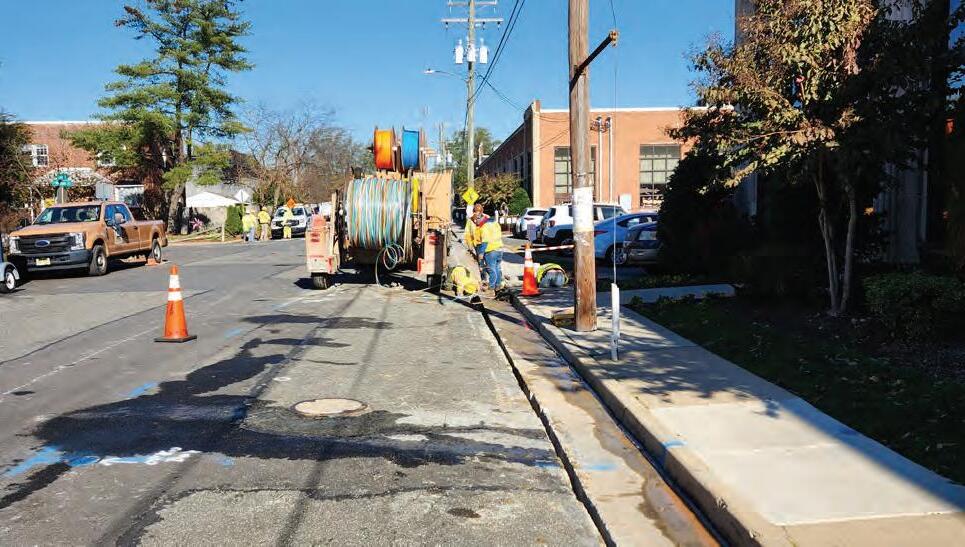
“The function of speed is cost,” O’Boyle stated. “If you’re doing something faster, you’re not leaving equipment around, and you’re not having to drag a process out, you can be more competitive on your installation rates.”
Minimized road disruption is a significant benefit in urban and other areas where houses and buildings are clustered together. “You are not impacting the roadway,” O’Boyle said. “You can install fiber in a microtrench application and not impede traffic, whereas other deployment styles require the roadway to be shut down or full lanes to be shut down. Even if it’s a small town, microtrenching makes sense in town where a lot of people are going through, it’s not in the way.”
Microtrenching was also shown to be safer than other installation methods. “We were able to prove through the data that installation using micro trenching is less of a hazard to the public than other installation methods,” O’Boyle said. “We’re not advocating for the removal of other installation methods. There are installation boondoggles with any type of installation equipment and method you’re using, so let’s understand that and be fair about evaluating all options.”
Using data from the 2021 DIRT report published by the Common Ground Alliance, horizontal directional drilling (HDD) resulted in 10,058 damage incidents, making up nearly 5% of all reported incidents. In comparison, all types of trenching – including but not specific to microtrenching – resulted in 11,701 damage incidents, around 5.75%. Backhoes were the largest offender, resulting in nearly 38% of all reported instances of damage to subsurface utilities.
There are examples where microtrenching isn’t the right tool, O’Boyle said, such as for long-haul routes between cities and areas where roads might be moved or relocated due to maintenance or other types of construction.
O’Boyle said the discussion on microtrenching is part of an ongoing conversation FBA and its committees are having with its members and communities to find the best ways forward to install fiber across the country. “We’re in a really intriguing time, where operators, contractors, and manufacturers can all sit at a table thinking through how we are deploying fiber today and how can we do it better,” he said. “What information can we provide so people can make the best decisions for their network?
I reached out to many people that weren’t involved with the writing of this paper to get their point of view on microtrenching. I got a lot of bad feedback, and I got a lot of good feedback. That tells me there’s obviously a story to be told here. We hope that this paper starts or continues a discussion we’ve been having and provides a perspective that people really hadn’t thought about, particularly when you take a look at how we’ve examined the DIRT damage data.”
47 Fiber Forward • fiberbroadband.org
A Ting Internet microtrenching project in Alexandria, VA illustrates how little the process disrupts the road surface, making it easy to deploy fiber and restore the pavement. Source: Doug Mohney.
Fiber’s Sustainability Pull
By Doug Mohney
Fiber is capable of delivering many wavelengths of light, but green, representing sustainability, is the color the technology is associated with around the world, according to a recently conducted survey by the FTTH Council Global Alliance (FCGA). Major carriers such as AT&T are leveraging fiber and other telecom technologies to lower carbon emissions for both themselves and their customers, with AT&T expected to reduce worldwide emissions by a gigaton by 2035.
Published on April 24, 2023, the Fiber Council Global Alliance (FCGA) Sustainability Survey explored Environmental, Social, and Governance (ESG) and Corporate Social Responsibility (CSR) strategies throughout the telecom industry with network operators, service providers, and vendors across five geographical regions. While some regions are far more advanced than others, fiber’s sustainable properties will help the global telecom industry achieve ESG and CSR goals.
The Sustainability Survey notes that, according to a Boston Consulting Group report, the Information and Communications Technology (ICT) sector is responsible for 3% to 4% of all global emissions—twice the levels of the aviation industry. However, research by RVA, LLC and the Fiber Broadband Association reveals that Fiber-to-theHome (FTTH) directly reduces carbon output through work from home (WFH) practices, leading to a 34% reduction in internet CO2 emissions. Fiber consumes less energy per kilowatt hour (KwH) than other broadband technologies while the materials used to create fiber are inherently sustainable.
“The fiber broadband industry is currently experiencing its largest investment cycle ever, and we expect to see this momentum continue to rise over the next five years due to the long-term benefits fiber can provide for broadband connectivity goals as well as sustainability initiatives,” said Gary Bolton, President and CEO of the Fiber Broadband Association. “Fiber is the only way to simultaneously deliver high-speed, reliable internet services and support ESG and CSR goals, green energy, less waste, and the greater good of society.”
Fiber-based broadband technologies help the telecom industry reduce global emissions because fiber consumes less energy than other broadband technologies. The Sustainability Survey results revealed several common

themes across all regions of the study. Converting legacy cable networks from Hybrid Fiber Coaxial (HFC) to Fiberto-the-Home (FTTH) was cited as a way to improve sustainability programs, by removing power-hungry RFbased coax equipment and replacing it with fiber Passive Optical Network (PON) technology.
Supporting customer Greenhouse Gas (GHG) reduction programs through the Life Cycle Assessment (LCA) methodology enables businesses to identify sustainability enhancements and develop GHG impact estimates for early-stage innovation programs. Most companies are working on plans to achieve at least a 40% reduction in GHG emissions by 2030, with long-term goals of net zero by 2040.
Utilizing fiber brings numerous advantages for businesses to reduce carbon emissions, with the telecommunications sector playing a key role in achieving sustainability goals. “Fiber optic technology is one of the most sustainable broadband technologies available today,” said Kholoud Aldorgham, Director General for the Fiber Connect Council MENA (Middle East North Africa). “Not only does it consume less energy, but it also has a longer lifespan than other technologies, which reduces the amount of waste generated. In the MENA region, there is still a lot of work to be done to promote sustainable practices in the
48 Fiber Forward • Q 2
Source: Dall-E/OpenAI
telecommunications industry. One important step would be for companies to invest in the deployment of fiber optic networks, which would not only reduce their carbon footprint but also provide high-speed, reliable internet access to consumers.”
Sustainability isn’t a fad but an important factor in today’s business world, according to other industry research. The 2022 Gartner Sustainability Opportunities, Risks, and Technologies Survey showed that 86% of business leaders see sustainability as an investment that protects their organizations from disruption. It goes on to state that four out of five leaders see sustainability as helping their organization optimize and reduce costs while 83% said their sustainability activities directly create short and longterm value for their organization.
One major carrier that is leveraging the value of fiber and sustainability to reduce its carbon footprint is AT&T. “All of our customers want to know how AT&T is thinking about climate change. Addressing climate change, as a risk or an opportunity, is becoming increasingly important to businesses,” said John Schulz, Director of Sustainability Integration, AT&T. “There are lots of surveys out there that will show you this issue is becoming more and more important.
Building pressure is a great change agent and provides a great sense of urgency. Pressure to address climate change is coming from more and more sources these days, your customers, competitors, from regulators in some cases, and a lot of public companies are getting it coming from investors.”
AT&T is on a path to become carbon neutral by 2035, leveraging its fiber network and other technologies to help business reduce carbon emissions by a gigaton that same year. The company believes connectivity will play a fundamental role in helping its customers become more efficient and reduce greenhouse gas emissions.
“Connectivity opens your eyes to things you couldn’t see before, connections like fiber-enabled connectivity to buildings, IoT (Internet of Things), connections to mobile assets,” said Schulz. “This connectivity provides access to data that can be analyzed and can be used to drive
efficiency and save costs and time. And oftentimes that visibility can help reduce emissions. We took that concept and we put our money where our mouth is, if you will, and set a public goal to be carbon neutral by 2035. We will enable our customers to reduce a gigaton of greenhouse gas emissions. A gigaton is a billion metric tons. It’s a big number.”
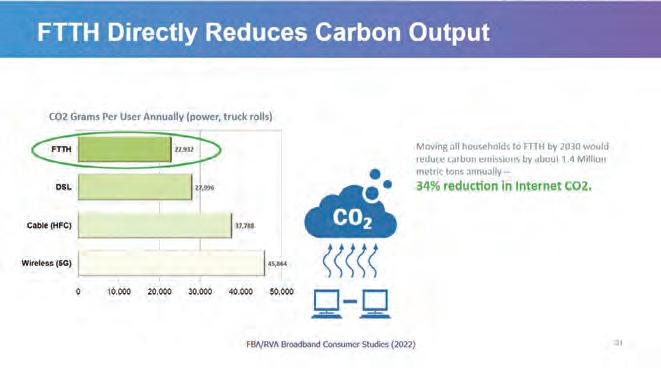
AT&T has identified four “big hitter” emission intense areas where it is creating Smart Climate solutions to reduce greenhouse gas generation, including transportation, industrial, energy, and agriculture, combining tools from its portfolio of services, including fiber, IoT, 5G, edge computing, voice and collaboration, and network virtualization. For example, fiber-connected Smart Grid solutions will work with renewable energy sources to reduce oil and gas emissions. IoT solutions, such as AT&T’s Fleet Solutions, enable insight into the use of AT&T’s own vehicles and help reduce fuel use today and generate data for the introduction of electric vehicles in the future, thereby further reducing AT&T’s carbon footprint over time.
“The challenge of climate change is very real and daunting, but we have to be optimistic and look for solutions and we feel like our connectivity solutions, including things like fiber and 5G, can play a big role,” said Schulz. “We realize we can’t do this on our own. In 2021, when we announced our gigaton goal, we created the Connected Climate Initiative (CCI).
“When we look at our role in addressing climate change, we feel that we do play a fundamental and critical role, but we realize we need to collaborate and work with other experts with complementary technology and complementary expertise to develop robust solutions that can be scaled.”
Partners in the initiative include Deloitte, Duke Energy, Microsoft, Salesforce, and several nonprofits and academic universities. “We’re openly and actively looking to collaborate with other leaders that are of the same mind, recognizing the political nature of addressing climate change but also looking to play a role in addressing that challenge.”
49 Fiber Forward • fiberbroadband.org
17 Fiber Forward Software designed to help Service Providers deliver flawless WiFi from day one RouteThis helps improve your subscriber experience • Field support for technicians
Remote support for agents
Self-support for customers RouteThis.com
•
•
2023 Industry/Partner Event Calendar




Regional Fiber Connect
June 21, 2023 | Lake Tahoe, CA
Mountain Connect
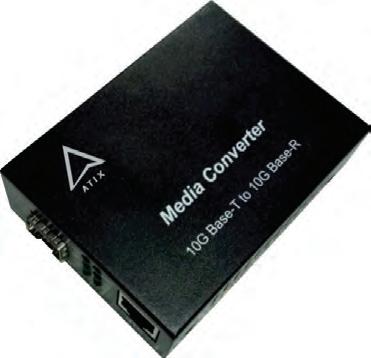
August 7-9, 2023 | Denver, CO
Fiber Connect 2023
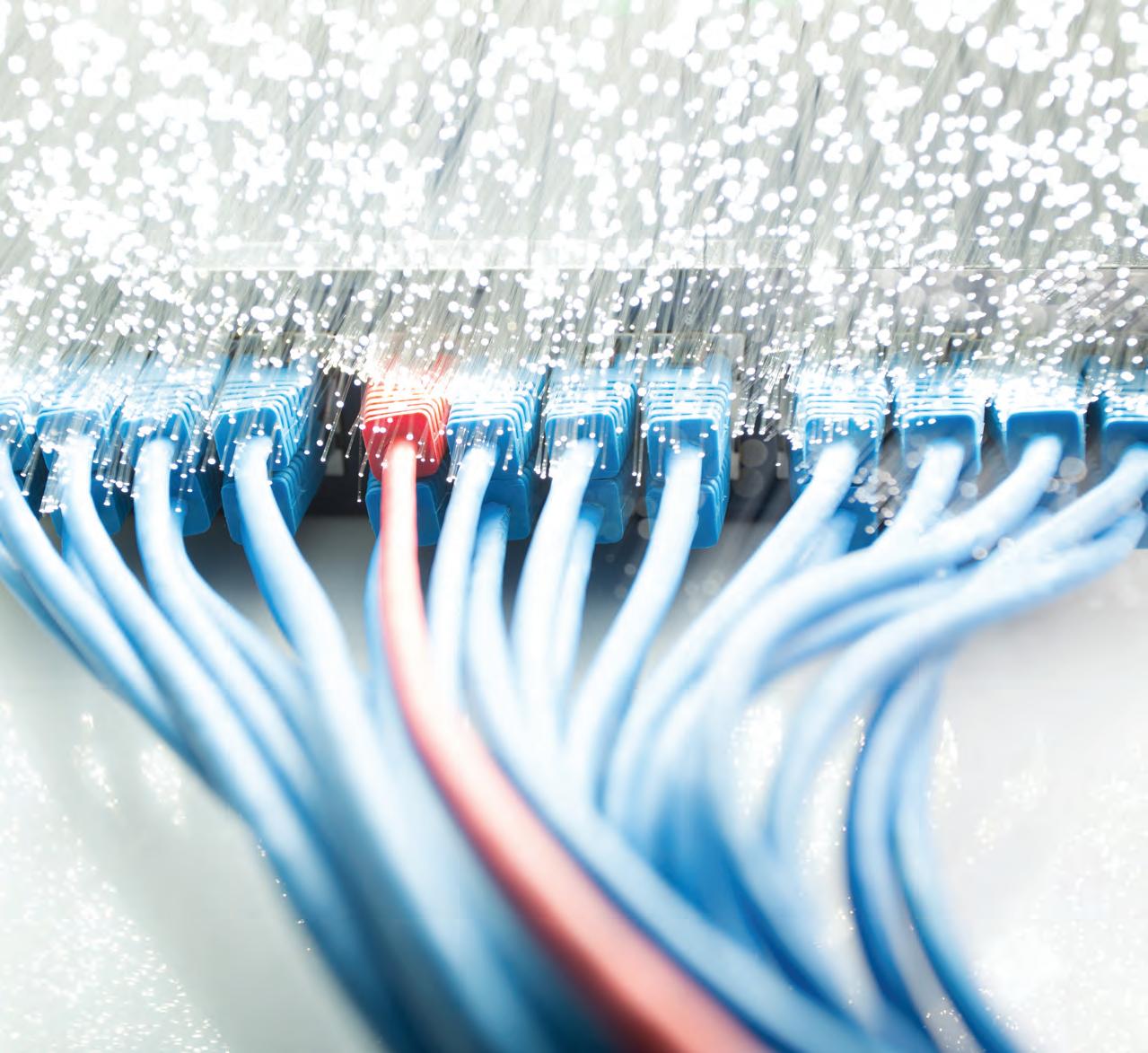
August 20-23, 2023 | Orlando, FL
ISE Expo
August 29-31, 2023 | Kansas City, MO
NTCA Fall Conference
September 24-27, 2023 | Boston, MA
Regional Fiber Connect
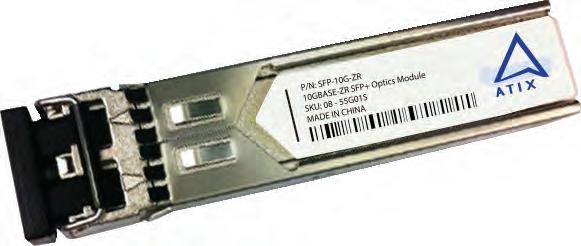

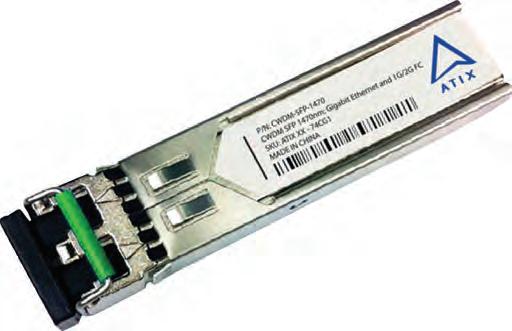



October 24, 2023 | Minneapolis, MN
U.S. Broadband Summit
November 15-17, 2023 | Washington, D.C.
Fiber Forward • fiberbroadband.org Join the Fiber Broadband Association at the following industry events!
A Timely Guide TO BUILDING THE BROADBAND WORKFORCE
By Doug Mohney
In May, the Fiber Broadband Association released its Workforce Development Guidebook. The publication is a comprehensive resource for state broadband offices (SBOs), state and local workforce/economic development boards, and other equivalent agencies as they formulate their workforce development strategy for the NTIA’s $42.45 billion Broadband Equity, Access, and Deployment (BEAD) Program.
The historic influx of public funding from the Infrastructure Investment and Jobs Act (IIJA) and BEAD Program, as well as other public and private investments into connectivity, is spurring an unprecedented amount of construction activity and creating a nationwide demand for skilled labor far beyond what the current workforce can support. FBA’s Workforce Development Guidebook notes that, according to the government’s calculations, 150,000 telecom jobs will be created by BEAD, while research by the Fiber Broadband Association estimates the industry will need over 205,000 new jobs in the next five years to construct, operate, and maintain these new networks in every state.
Broadband network construction firms are already feeling the pinch with fiber splicers in short supply, as documented in an April 23, 2023, Wall Street Journal piece, “The U.S.’s $42.5 Billion High-Speed Internet Plan Hits a Snag: A Worker Shortage.” The Government Accounting Office estimates that some 34,000 additional workers could be needed this year to support the government’s broadband expansion program, the Journal reported.
NTIA included workforce planning requirements in the BEAD Notice of Funding Opportunity (NOFO), compelling states at the beginning of the process to consider how to ensure enough high-skilled workers are available to deliver funded projects. The agency outlined key components of a workforce plan that states must consider and respond to in their Five-Year Action Plans, including training and workforce development activities, skilled workforce activities, labor and employment laws, and contracting requirements.
While all those components are instrumental to creating a prosperous workforce ecosystem, FBA’s Workforce Development Guidebook primarily focuses on training and upskilling activities. It provides context on the telecommunications landscape, broadband workforce development, and practical guidance on how to craft and deploy an effective workforce development strategy.
“Beyond safeguarding the delivery of broadband to the millions of Americans that are currently without access, broadband workforce development goes to the heart of the IIJA – creating quality jobs and long lasting, high wageearning careers for U.S. workers in local communities across the nation,” said Gary Bolton, President and CEO of the Fiber Broadband Association. “There is a lot of focus placed on building broadband networks, but we cannot build them without a proper workforce. Failure to ensure the availability of high-skilled labor will result in workforce bottlenecks, which will ultimately lead to higher costs and project delays.”
The Workforce Development Guidebook is a 48-page publication that provides a formula that state broadband offices can follow to guarantee their Five-Year Action Plans and address workforce development alongside planned miles and materials so they can successfully administer BEAD deployment programs.
“Due to the scale and complexity of BEAD, even states with experience deploying broadband programs will encounter new challenges in planning for BEAD,” said Deborah Kish, Vice President of Research and Workforce Development at the Fiber Broadband Association. “This Guidebook will enable them to build a comprehensive approach with a state workforce development strategy that invests in skills and training and ensures success for individuals and for service providers that satisfy their needs today and for the future.”
The Guidebook has knowledge and strategies applicable for stakeholders beyond state broadband offices, including local governments, community colleges, and employers. “One goal of the guidebook is to help communities put a number on how large of a trained workforce is needed to build and sustain a broadband network in their own backyards,” Kish said. “Communities can quantify the amount of fiber network builds that will take place, examine how many skilled people they have available, work back from there as to the number of skilled positions that need to be filled, what training needs to take place, and when training needs to start based upon when construction starts.”
52 Fiber Forward • Q 2
The Fiber Broadband Association’s mission is to accelerate the deployment of fiber broadband networks to ensure digital equity and enable every community to leverage economic and societal benefits that only fiber can deliver. Modern American history is marked by inflection points that changed the course of how we live — from the electrification of rural America to the creation of a national highway system. Today, connecting every home and business across the US with fiber broadband will create that kind of seismic change. The Fiber Broadband Association is the voice of fiber. As the premier association that focuses solely on fiber, we are relentless in our work to connect every American with fiber. Because only fiber can close the digital divide, and unleash economic development that will raise the quality of life for every single one of us — providing education and job opportunities; eliminating poverty; creating sustainability and enabling innovations we haven’t even thought of yet. Fiber ensures no one gets left behind. The moment is now for fiber. So we ask you to join us. This is our call to action. Because the future not only belongs to fiber; fiber will enable the future. Fiber Broadband Association. When fiber leads, the future follows.
Section 1 - Telecommunications Workforce Landscape
Section 1 discusses the labor challenge facing the telecommunications industry, describes the skilled jobs required for fiber broadband and wireless development, and provides insight into current practices for sourcing labor, hiring, and onboarding. Among the issues raised in this section are the large number of skilled technician positions that will need to be filled around the country, the currently shrinking telecom workforce, consistent poaching of skilled technicians, and the challenge that skills developed in adjacent industries can’t easily transition into more specialized roles.
There are also challenges with service providers competing for labor, both for fulltime workers and contractors and more importantly attracting new and younger people to the industry. The issue is that it currently takes anywhere from three to six months for a new fiber technician to become productive, and that there’s a lack of standardized training, making it more difficult to find skilled workers.
Section 2 - Introduction to OpTIC Path™
This section highlights the benefits of FBA’s OpTIC Path™ course as an existing and ready-to-deploy solution to meet industry fiber technician training needs, providing an outline of benefits to participants and employers and an overview of the curriculum models for the 144-hour
course and shortened time to ROI.
Section 3 - Fiber Broadband Workforce Development
Section 3 outlines the role of the state in supporting broadband development for the BEAD program and identifies available funding sources for training. Issues identified include that states are unlikely to have faced a labor shortage similar to that of the BEAD program, one that is nationwide in scale, highly time sensitive, and requiring many different specialty skills. The Guidebook provides a list of federal and other grants and programs that can be used to fund workforce development.
Section 4 - Building a Workforce Development
Strategy
This section provides an outline of key considerations for a fiber workforce development strategy aligned with NTIA guidance. It also provides a plan for states to follow to meet the workforce development requirements of BEAD, including the Five-Year action plan.
Section 5 – Establishing and Scaling Fiber Broadband Training


The final Guidebook section steps through the actions to build a fiber broadband training program to meet the needs of BEAD and help address industry labor challenges. It provides examples of what several states and tribal governments have done to build and promote fiber broadband training.
Information is also provided around apprenticeships and the apprenticeship model of training. “The fiber industry is not really hot on apprenticeships today,” Kish said. “Vermont has been able to construct a model for fiber apprenticeships, with Vermont Tech getting a grant from the state’s apprenticeship expansion fund. They’re using the funds to deliver the FBA OpTIC Path training course and can offer fiber technician training free to anyone who wants it with committed employers and jobs on the other end of training.” Kish believes the Guidebook will help employers and community colleges work together to form partnerships for delivering the technical training needed to create more fiber technicians.
The Guidebook is available on the FBA’s website at https://fiberbroadband.org/resources/broadband-workforcedevelopment-guidebook.
53 Fiber Forward • fiberbroadband.org The Guidebook is organized into an introduction and five key sections, with each section examining a different part of the workforce development process. 5 Broadband Workforce Development Guidebook – April 2023 Broadband Workforce Development Guidebook Develop WFD requirements for subgrantee selection proces Five-Year Action Plan Submission Planning Fund Initial Proposal Submission Final Proposal Submission NTIA Notice of Available Fund 2026+ 2025 2024 2023 Q1 Q2 Q3 Q4 Q1 Q2 Q3 Q4 Building a Workforce Development (WFD) Strategy Establishing and Scaling Fiber Broadband Training Establish workforce development goal 4.A Create dedicated workforce development Labo gap assessment Coordinate training locations with employers and colleges Advertise training course Ongoing training Skilled technicians available for BEAD Fiber Deployment Projects Finalize program logistics (e.g., timing, instructors) Work with state legislature to secure additional WFD funds if needed 4.C Define WFD strategy & objectives 4.E 5.C Begin career building awareness efforts at high schools & colleges Tracking training progress & success 5.C 5.D Fiber training program Survey state resources incl. funding option 4.D Define state-wide curriculum and operational model 5.B Ongoing recruiting Implementing Training Program Ongoing stakeholder engagement for WFD initiatives Stakeholder engagement for Five-Year Action Plan & Initial Proposa Stakeholder engagement for Final Proposa 5.A Workforce Planning Process TELECOMMUNICATIONS WORKFORCE LANDSCAPE 1 8 Broadband Workforce Development Guidebook – April 2023 Broadband Workforce Development Guidebook – April 2023 Activity Job Roles Post-Construction Construction Pre-Construction Network Planning Network Planner Network Designer Project Manager Estimator Surveying Land Surveyor Pole Surveyor OSP Engineer Permits Permitting Officer Procurement Procurement Lead Network Construction Laborer Pole/Anchor Forema Tower/Antenna Foreman Safety Lead Locator Quality Inspector Field Engineer Tower Construction Tower Technician Wireless Technician Tower Climber Fiber Splicing Fiber Optic Technician Splicer Technician Fiber Lineman Optical Network Installation & Commission Fiber Technician Wireless Network Installation & Commission Antennae Installers Wireless Technician Electrician Customer Installation Premise Installation Technician Customer Support Representative Field Maintenance Maintenance Technician Telecommunications Employees, 2013 to 2023 (BLS), NAICS Code: 517 with undemanding education requirements, full-time employment status – should appeal different backgrounds. BEAD provides a catalyst opportunities to a broader range of workers via initiatives, which can provide pathways to improve economic diversity in the telecom workforce. 1 2 3 4 5 01/1701/18 01/1901/20 01/2101/22 01/23 Month/Year 794 763 730 708 679 655 Activities and Job Roles in Fiber Broadband & Wireless Networks Detailed summaries of select job roles with descriptions and typical hiring requirements can be found in Appendix I.
Cable’s Surging Fiber Future
By Doug Mohney
The cable industry has long been intertwined with fiber, but recent research by two different analyst groups suggests that the days of coax are numbered. Fiber is becoming the primary end-to-end medium for many cable companies under many situations, from new “greenfield” installations and expansions to overbuilding in competitive markets where fiber and fixed wireless are perceived as threats to market share.
“Forty-three percent of MSOs have already deployed PON in their networks,” said Jaimie Lenderman, Principal Analyst and Research Manager at Omdia covering the Broadband Access Intelligence Service. “It’s split between the largest and smallest providers. Middle-sized organizations are expected to deploy PON in the next 12 to 24 months or longer.”
Lenderman made her remarks when presenting Omdia’s most recent MSO fiber research on the March 8, 2023, Fiber for Breakfast podcast. Omdia conducted its research between February and March of this year, surveying 60 cable companies across five regions around the world with North America making up 64% of the survey sample. Around 76% of those surveyed have deployed fiber to the home (FTTH) services within the last three years.
Multiple factors are driving cable providers to deploy PON today, including gaining competitive advantage (56%), the ability to offer new business services (46%), being able to add enhanced revenue services such as low latency for gaming (39%), lower operational expenses (35%), and 32% of respondents deploying fiber in greenfield scenarios.
However, MSOs are also dealing with obstacles slowing their march to fiber, including capital expenditures when compared to simple cable plant upgrades, time to market for upgrading existing plant versus deploying an all-fiber network, questions on the return on investment for fiber, and issues involved in migrating existing customers off coax onto PON, such as installation truck rolls and switching over last-mile services.
Despite those hurdles, Lenderman sees an all-fiber future for much of the cable industry and fairly quickly. “Omdia expects 77% of MSOs will sunset HFC broadband within 10 years,” Lenderman stated. “Three percent have already sunset HFC and 31% will do so in the next two years.”
Coax plant holdouts delaying fiber believe that DOCSIS 3.1 has “a lot of runway” for growth, but few in the industry are looking at a successor to DOCSIS 4.0, a technology not
Record Year for Broadband Spending
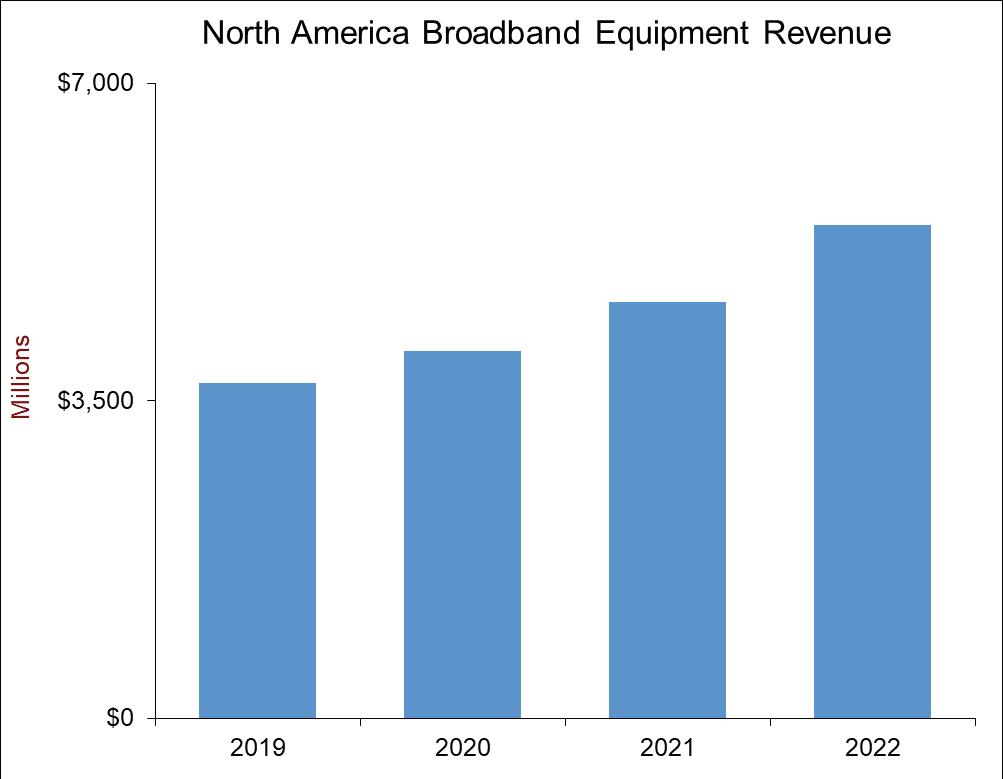
y NA spending increased 19% in 2022
Includes all Cable Access infrastructure, associated CPE, and Residential Fixed Wireless CPE
RDOF other programs driving fiber over building and expansion
Cable spend roughly flat
y Growth in North America outpacing other regions
Source: Dell’Oro Group.
54 Fiber Forward • Q 2
North America Broadband Equipment Revenue
expected to be in service until 2024 or later. Lenderman pointed out that 25G PON deployments are happening today over existing GPON and EPON networks, with 50G expected to arrive commercially in 2026. “There’s a lot of runway for 25G and 50G,” she stated, as cable greenfield and overbuild GPON networks can be easily upgraded without replacing fiber.
External factors impacting cable PON deployments
included the COVID pandemic, competition, supply chain issues, and vendor solutions. Around 32% of providers accelerated their PON deployments during the pandemic while 21% slowed them down. Competition proved to be a solid factor, with 65% saying they accelerated their PON deployments because of that factor with 32% saying it had no influence on their decisions. Supply chain issues were a near draw, with 41% of providers accelerating their deployments while 37% slowed them down. New vendor solutions are having a positive impact, with 46% of respondents reporting their plans have accelerated or significantly accelerated thanks to them.
Dell’Oro Group concurs with Omdia’s premise that PON will be a driving force for cable to migrate to fiber.
“Right now, it’s 10 Gig EPON and DOCSIS provisioning over EPON makes it a lot easier for the cable operators to introduce those technologies as they migrate over to fiber gradually,” said Jeff Heynen, Vice President for Broadband Access & Home Networking Market
Research, Dell’Oro Group. “It makes it easier to introduce from a management and provisioning perspective. Charter’s RDOF-based edge out projects, for example, are very heavily 10 Gig EPON-based, but I certainly expect over time that those same cable operators and smaller cable operators already doing this now will move to XGS-PON to take advantage of the volumes and the scale deployments and price benefits that you get with those deployments.”
Last year was a record year for broadband spending in North America, with an increase of 19% in 2022 over the previous year. Speaking at a March Fiber for Breakfast webinar, Heynen attributes the increase to the FCC RDOF funding and other federal programs driving new fiber networks, while cable spending is relatively flat and the $1.8 billion decrease in DSL spending sliding into the fiber column.
“We’re going to continue to see heavy purchasing and heavy shipment volumes of XGS-PON units,” said Heynen. “I fully expect that in 2023, probably by the middle of this year at least in the North American market, that XGS units will surpass those 2.5G PON units. Price points are coming down, that’s an important part of it, making it more affordable for operators to buy XGS-PON units in volume.”
Migration from XGS-PON to higher speeds looks equally promising over the next decade, with 25G PON playing a significant role. “We’re already beginning to see in some

55 Fiber Forward • fiberbroadband.org August 2023 Materials due July 10, 2023 • Fiber Connect 2023 Issue • Smartest of Smart Homes and the In-Home Experience • Digital Literacy | 10G for Business | Network Traffic Exchange Points • Executive Insights | Federal/State Update | Community Profiles | Innovation at Work November 2023 Materials due October 17, 2023 • Middle Mile Innovations • Fiber Connect 2023 Highlights • State of the Association • Executive Insights | Federal/State Update | Community Profiles | Innovation at Work Grab your spot now in the upcoming Fiber Forward issues! Contact Lucy Green at lgreen@fiberbroadband.org for sponsorship opportunities. Please note editorial topics may be subject to change based on future events and market shifts. 2023 EDITION 2023 THE YEAR EVERYONE’S CARDS ARE ON THE TABLE In This Issue: Digital Equity State Broadband Offices Quantum Computing 2023 Editorial Calendar
Cable Increasing Its Fiber Deployment
y Deployments driven largely by NA tier 1 and 2 operators
y R-OLTs allow MSOs to create FTTH service groups from the same node as cable modem subscribers
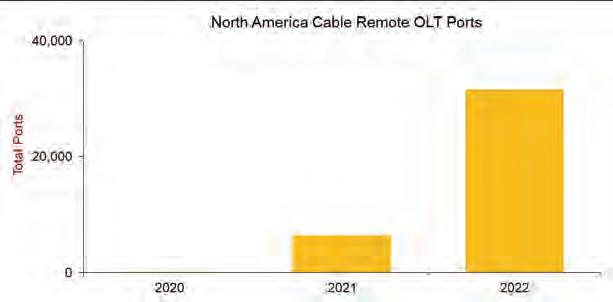
y Fiber subscribers can be managed just like cable modem subscribers
Source: Dell’Oro Group.
cases, particularly in North America, the market being seeded by 25 Gig capable ports,” said Heynen. “I say they’re capable, because the percentage of these ports that have been actually turned on to deliver revenuegenerating services is fairly limited at this point. Cost is an issue of course; the ONT ecosystem is just not there yet. But I think it’s important to note that you’ve got a growing number of cumulative OLT ports that are being put out into the network. Operators that prefer this upgrade path have that flexibility for a competitive response. We know of some operators that obviously are doing that already today using 25G PON for symmetric 10 Gig services.”
To continue the transition to fiber, cable equipment manufacturers are building equipment that fits in the existing physical cable plant, with remote OLT ports specifically designed to fit into existing fiber node housings or new node locations.
“Cable operators aren’t sitting idly by,” Heynen said. “They are making investments in their own fiber infrastructure and a lot of them are doing this through the use of
remote OLTs, which allow them take advantage of their existing node locations, but then begin to peel off fiber service groups in new neighborhoods from that existing node where they might be still serving the existing neighborhoods with DOCSIS 3 or 3.1 services. For some operators, the node is their transition point from DOCSIS to fiber and obviously we can have that debate as to how quickly that’s going to happen.”
PON’s roadmap to higher speeds makes it a solid selling point for all types of service providers, including the cable world. “One thing that makes operators feel more comfortable about investment in fiber is the fact that the technology roadmap is extremely healthy,” Heynen said. “They’ve got a plan from 2.5G today to 10G XGS-PON to 25G and now there’s 50G and 100G technologies that are being worked on. There aren’t concerns about regrettable spend or capital that’s going to go to waste because this [upgrade] roadmap is healthy. The vendor ecosystem is clearly very healthy. And it’s pretty obvious that [broadband] subscriber demand in addition to that is very healthy.”
56 Fiber Forward • Q 2 2023 Regional Fiber Connect Workshop Series June 21, 2023 | Lake Tahoe, CA October 24, 2023 | Minneapolis, MN Fiber Connect 2023 Conference & Expo August 20-23, 2023 Gaylord Palms Resort and Convention Center Kissimmee, FL FBA Premier Members Meeting December 4-6, 2023 Palm Springs, CA 2023 Event Calendar
(cont. from page 37)
Building a proper cybersecurity framework requires five parts, says Mason, starting with cloud security services to stop threats like malware and ransomware before they can become installed and active on devices or within networks. Visibility is the second part. “There’s an old security axiom; I love it. It says if you can’t see it, you can’t solve it,” he said. “The truth is so many times people will put security in, but they don’t necessarily view what’s going on and keep it up to date. That’s when new threats can affect both the business and consumers.”
Threat intelligence is the “flip side” to visibility, being able to monitor and identify new threats as they emerge. “The world’s changing every day,” Mason said. “If you look at what’s going on right now just with AI threats over the last couple of months, things have changed. It takes a great amount of effort and resources to keep up with new and emerging threats. Cisco and the rest of the security industry need to make sure we can help providers keep up to date with the latest intel and then supply tools providers can use to take that threat intelligence and create actionable security events or security postures using that intelligence.”
Automation providing orchestration and response tools to deal with the latest threats is the fourth part service providers need on their list. “There are millions of job openings in security right now,” Mason said. “Most providers and frankly most companies don’t have the size of security team they need. Their teams are skilled but they need help. Automation helps fill in that gap to deal with the latest threats.”
The final part service providers should have is some level of denial of service (DoS) protection. “Most of the time when we have a provider go down, they’ll say it’s either because of a ransomware attack, some attack that came through their consumers, or it’s a denial-of-service attack,” Mason said. “Many times, those are actually blended attacks.”
One aspect of cybersecurity that often is overlooked is backups. A third-party managed backup service provides protection against both catastrophic equipment failure and hackers looking to score cryptocurrency.
“If a user clicks on a phishing link and gets infected with ransomware, and it spreads throughout the network, you’ve got to restore that data somehow,” said Streff. “If your data becomes ransomed or encrypted, you need to have backups in order to be able to restore that data and continue your operations.”
Service providers should view cybersecurity not only as a potential liability, but an asset to reduce costs and potentially to generate revenue as well. “Security used to be seen as a cost center. It’s not so much anymore,” said Mason. “A good security posture can mean the difference between surviving as a company or going out of business to some of our providers. Good security posture will help keep them out of the news. We know that if good news
travels fast, bad news travels faster, right? This is one of those things where a provider who is secure and delivering security services to clients can help protect the business.”
With consumers acutely aware of security these days, people are looking for service providers that can deliver those services as part of a package or bundle, instead of installing and maintaining something a la carte. “Consumers are relying on providers to offer security services where they weren’t before,” Mason said. “Most average consumers aren’t going to go out and buy security services on their own. They’re going to buy internet service from somebody and if that provider has a security service, this is a really good way for that provider to increase average revenue per user and to provide a revenue stream that they didn’t have before.”
Providing security services either as a part of a basic package or as a value-added offering can provide more than financial dividends to providers. “It can not only keep them in business and protect their business but also increase customer loyalty,” said Mason. “We also see a reduction in inbound support calls and that reduction can actually offset the cost of security. We’ve seen that across the board. A lot of consumers get hit with malware, some form of ransomware, a hack, or a scam. They first call their provider, because they’re complaining that their internet service is down. In reality, it was a ransomware attack or a scam and now the service provider has to spend cycles helping customers or dealing with malware or ransomware.”
AI presents both a challenge and an opportunity in the cybersecurity world. “We are seeing an increase obviously in AI threats,” Mason said. “I think we’re right at the beginning of this threat. By the time you publish this article, I guarantee the threat will be both worse and different than it is right now. It’s moving that fast. The danger is that AI changes things very quickly. Because it changes things faster than humans can react, we have to build AI tools to combat those threats. Companies like Cisco have been using AI as a way to augment our security posture for years and that is going to be even more important going forward.”
Despite new threats from AI, Mason remains highly optimistic about the future. “The world is finally starting to take security seriously. Bad guys are always going to figure out new ways to hurt consumers and businesses. However, if security is a global mindset, and it’s something that is just default part and parcel of a network rollout, we can actually start punching back and have a really good chance to make this world a safer place,” Mason said. “There are tools out there now that can help providers automate responses, provide visibility, and really help providers not only understand what is happening within their networks, but also how to help customers. As an industry, we are working together and helping providers and every other customer out there to increase their security posture through better tools.”
57 Fiber Forward • fiberbroadband.org
(cont. from page 27)

solar on my roof and yet you’re sending me a power bill. I’m sure there’s been a mistake because they told me I wouldn’t get a power bill.’ Immediately, they were on the defensive. We needed a tool where we can graphically display in real time what they’re generating, using, and what’s coming from the grid. We looked for a solution to this problem, but believe it or not, there wasn’t a commercial solution, so we built Apolloware.”
The home energy monitoring system is a revenue-grade data logger pulling in information simultaneously from the solar inverter, batter inverter, and the electrical grid, along with monitoring appliances that are also consuming energy. From its original purpose, Apolloware has now become a large part of Bandera’s energy efficiency program.
“Apolloware has been approved by the USDA Rural Energy Savings Program as a verifiable measurement and verification device, which allows us to participate in that program,” said Hetherington. The USDA program provides a 0% interest, 20-year loan for replacing older



inefficient devices with newer ones. “We just put the new appliance on a customer’s bill, so you could replace your air conditioner or other device at no upfront cost, and we just bill you over 10 years. The member saves money with the more energy efficient device, and it reduces the load on our grid.”
The entire end-to-end system provides Bandera with the information and flexibility to deal with the future. “Every auto manufacturer in the world is going to electric,” Hetherington said. “With Apolloware, we’re preparing for the next version of electric grid, call it 3.0, which means things behind the meter are going to matter, whether it’s solar and batteries and EVs. Or all of them. So, we as a utility are preparing our infrastructure for that exact eventuality.”
Bandera is also using its smart grid to avoid the problems of the past. “We had winter storm Uri, which was a complete mess,” said Hetherington. “It was tragic, but it demonstrated the fragility of our grid. In Texas, one of the things people embrace is ‘If I can’t trust this, I’m going to do it myself.’ If people can’t rely on the grid, they’re going to put in batteries, solar, a generator.
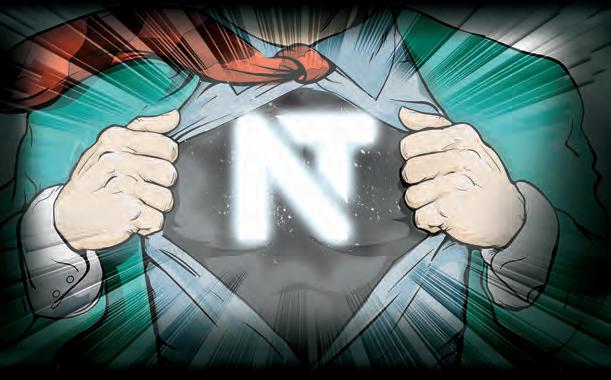
“I think from that, our grid in Texas is going to be probably one of the most progressive from the standpoint of decentralized resources, where the centralized electrical grid of big generators, transmission, and distribution will be split up into regional areas of redundancy, much more like a telecommunications network where you have resources that are overlapping, just in case one fails.”
Hetherington emphasized that smarter management is needed to prevent and minimize grid outages in the future, which means better data and informed decision-making.
“We can’t build our way out of this,” he said. “If we keep building, building, building, you’re actually adding more constraints to an already constrained electric grid and making it more prone to outages,” Hetherington stated. “We’ve got to learn to be energy aware and energy efficient, becoming aware of how and when you use energy. If you use it intelligently and efficiently, there are programs where we can help people reduce their costs, because it helps reduce our costs. But you’ve got to be willing to be more energy aware. So, I’m advocating that through technology, Apolloware and smart grid. We can have a more energy-aware society and that’s going to provide us a better a grid in the future.”
58 Fiber Forward • Q 2


The people connecting america corporate@ervincable.com 270-333-3366 450 Pryor Blvd Sturgis, KY 42459 Ervin Cable Construction LLC is your turnkey network deployment provider.
The game-changing SeeChange™ Access Terminal and precisely designed hardened connectors speed the final connection through:


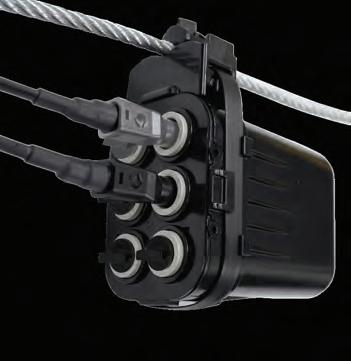
• Off-the-shelf availability
• Minimizing inventory management
• Cutting your design time
• Simplifying your installations
Clearfield® innovations make designing and installing plug-and-play fiber networks faster and easier than ever before. We can help you achieve your fiber connection goals. Ask Clearfield to show you how.
Removing Barriers to Fiber Deployment
Learn how to simplify your deployments at www.SeeClearfield.com or call 800-422-2537
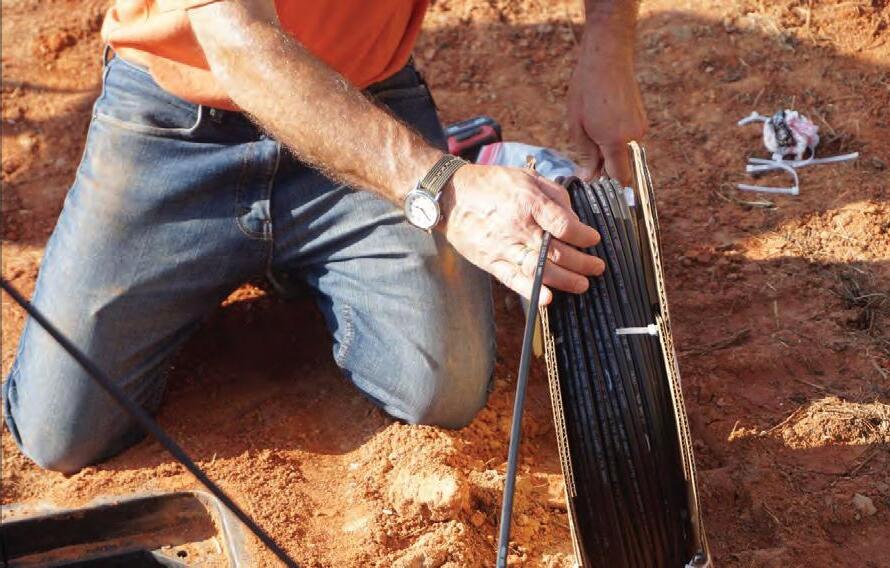
Enabling the Lifestyle that Better Broadband Provides
A small, pluggable hardened connection that
NO tools or special
3” SC Connector MPO Connector 4” 5.5”
SeeChange:
requires
training



























































































































































































































































































































































































































 By Doug Mohney, Editor-in-Chief
By Doug Mohney, Editor-in-Chief































































































